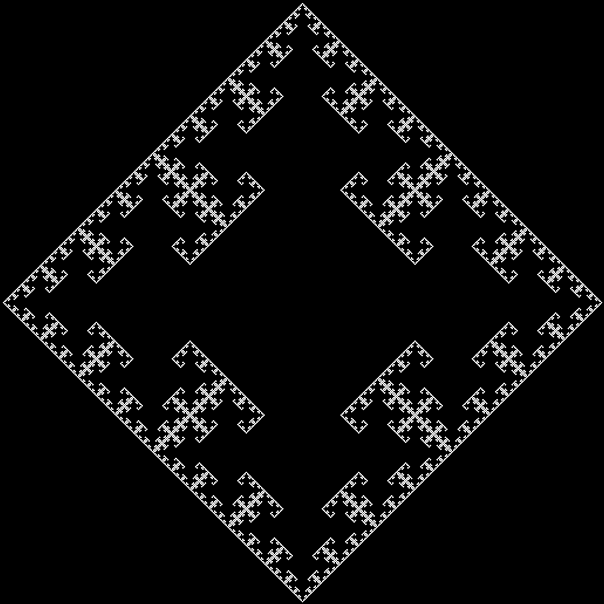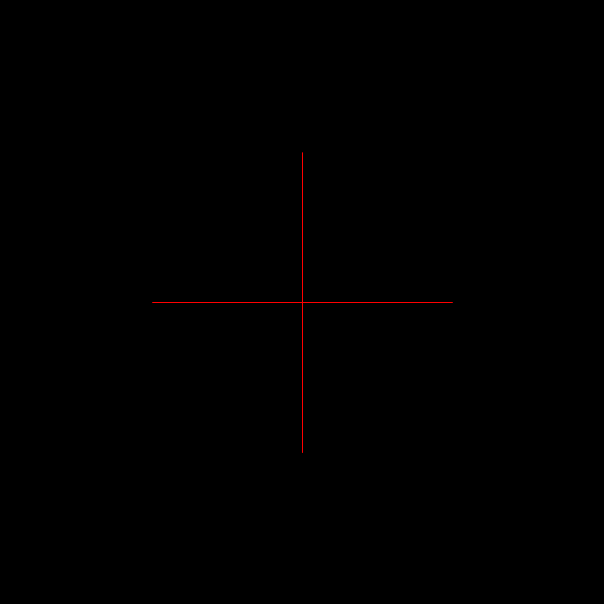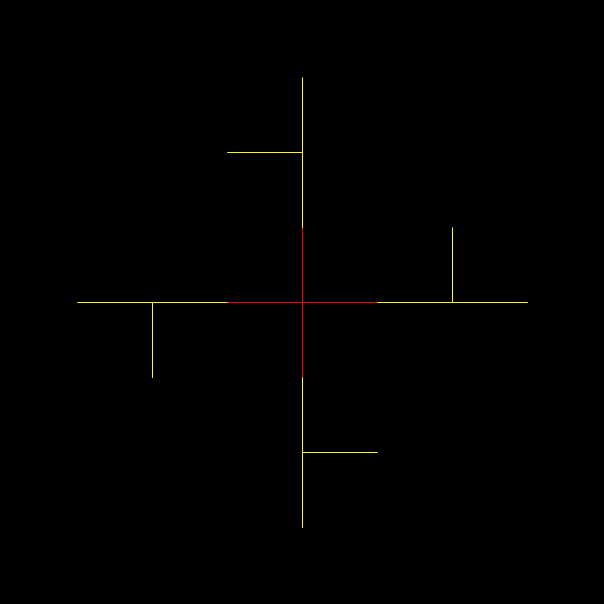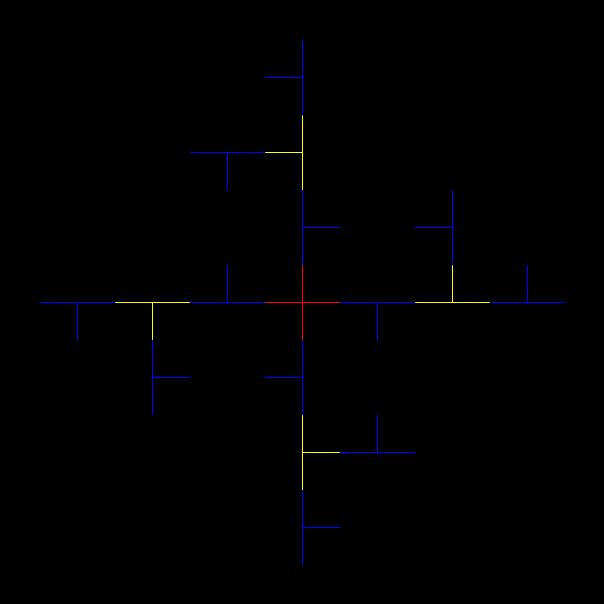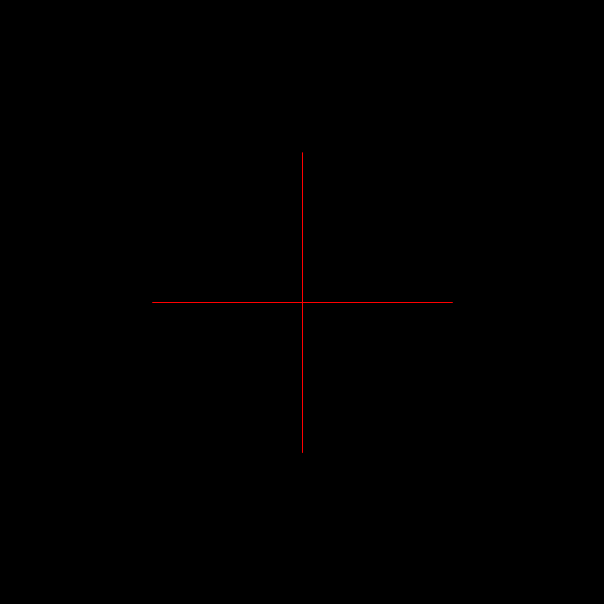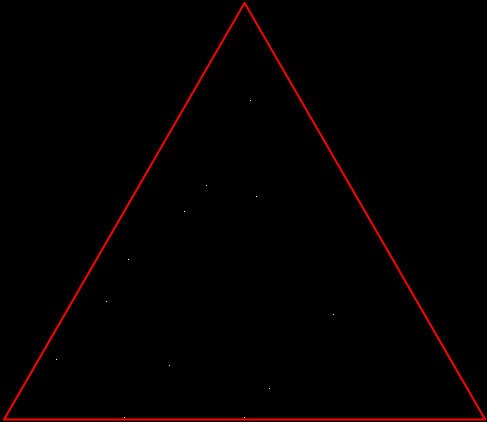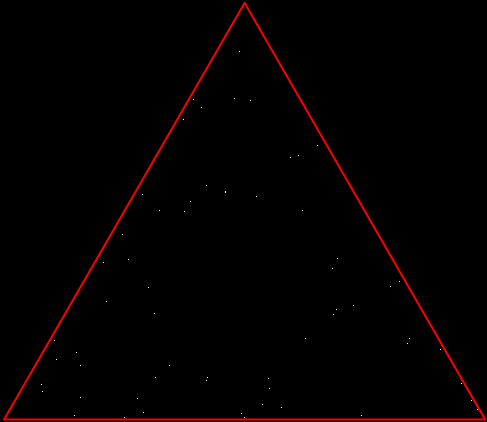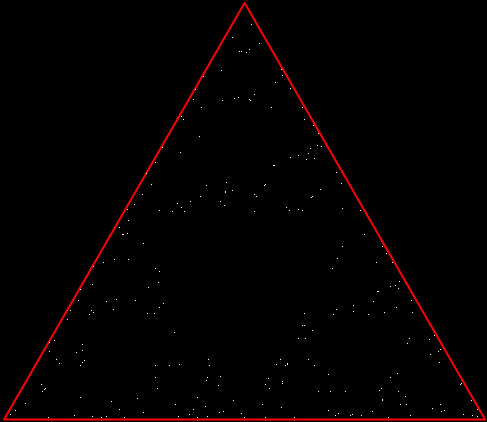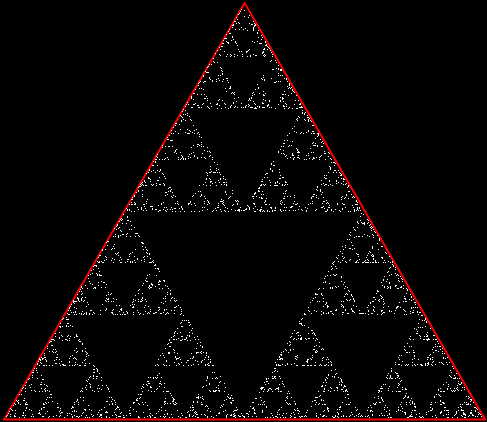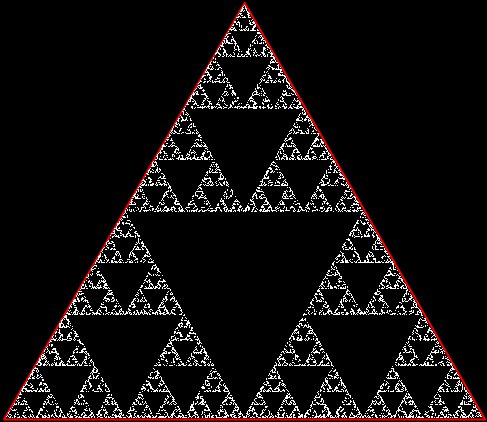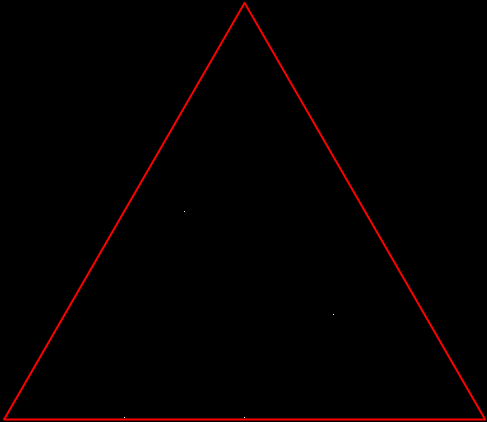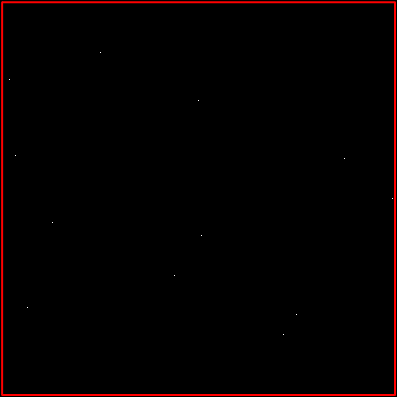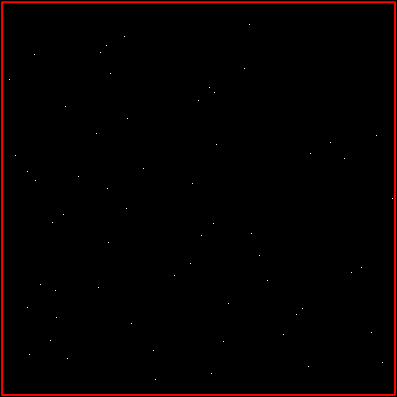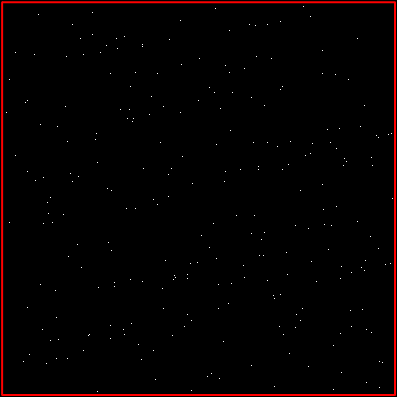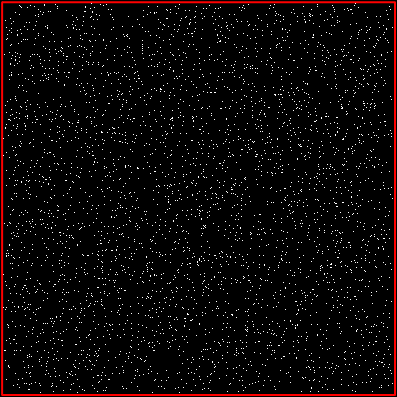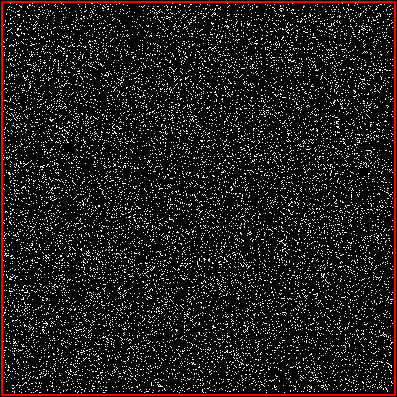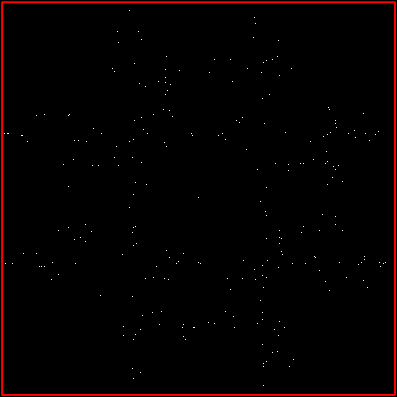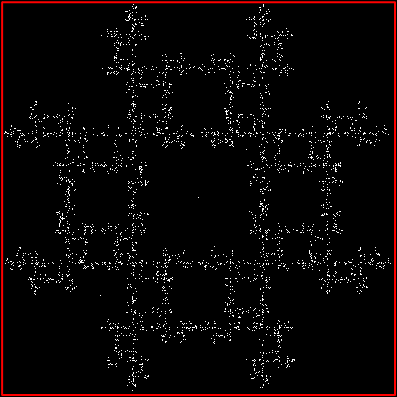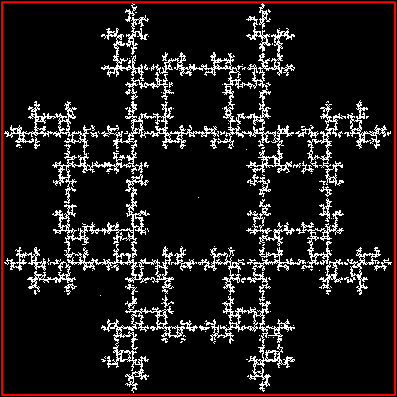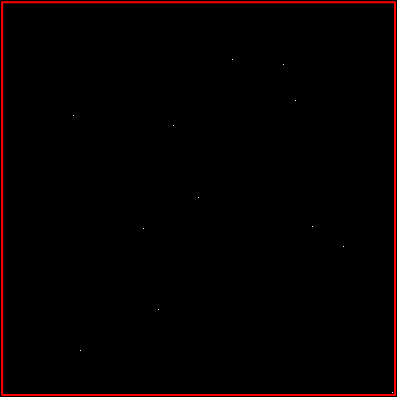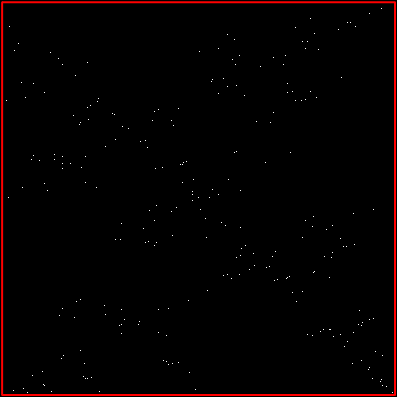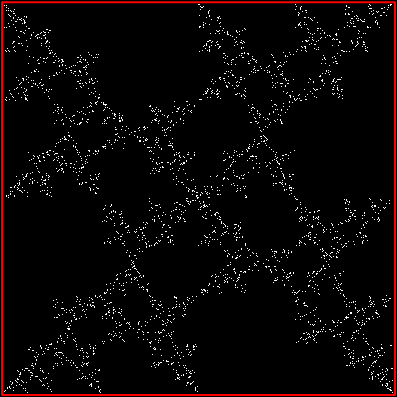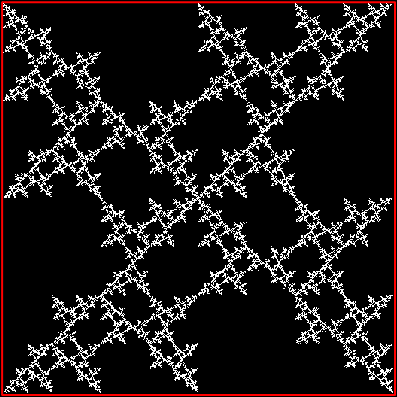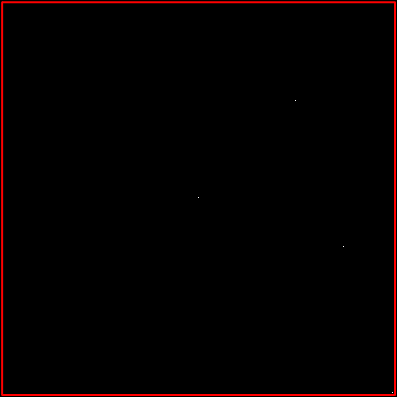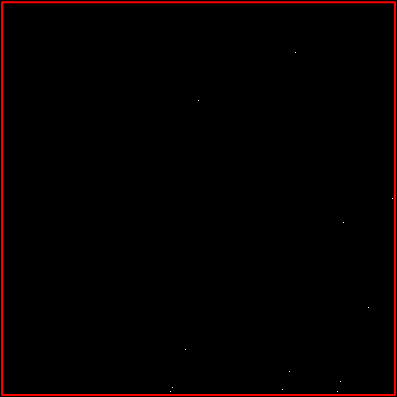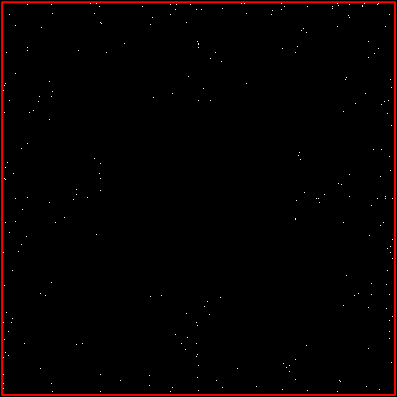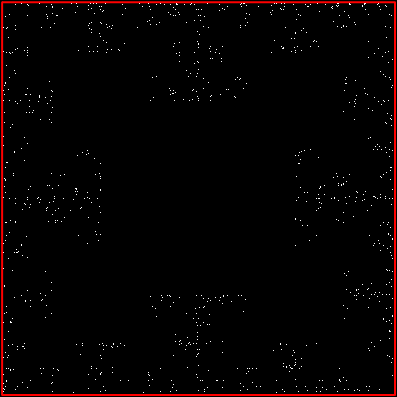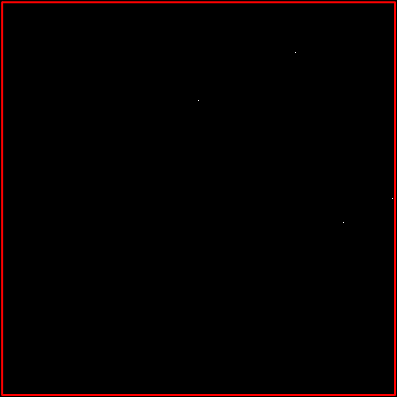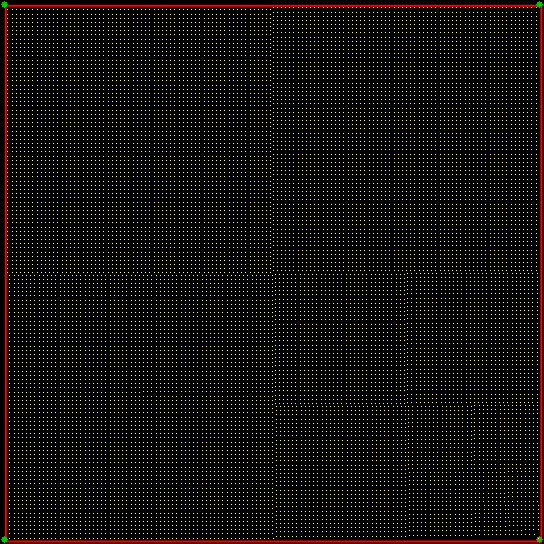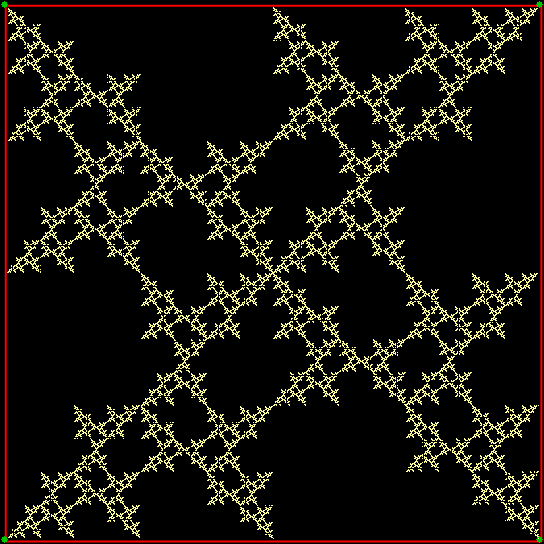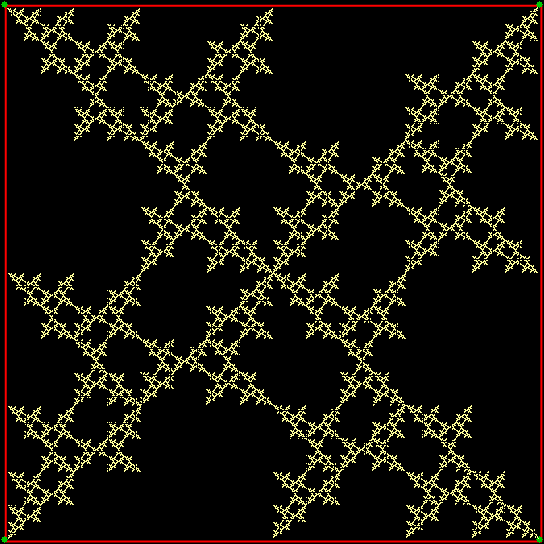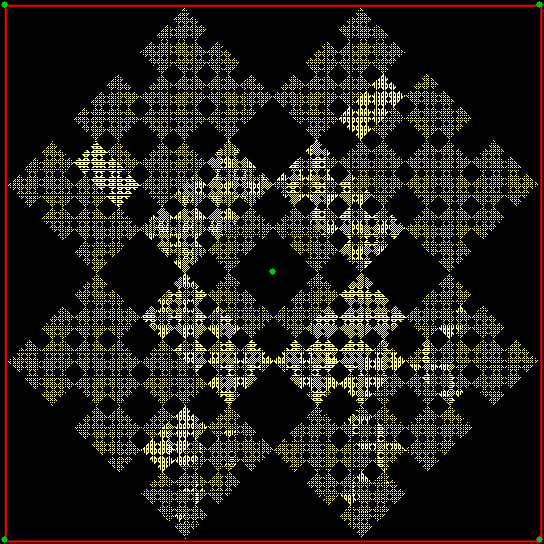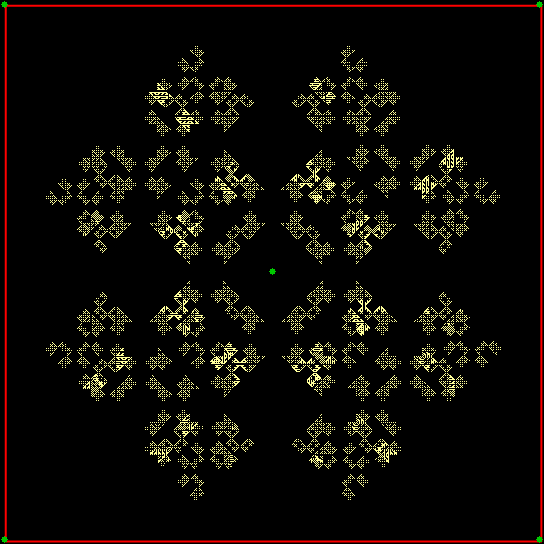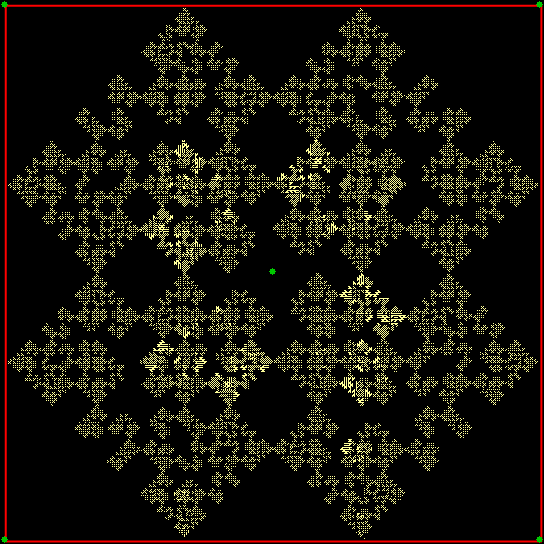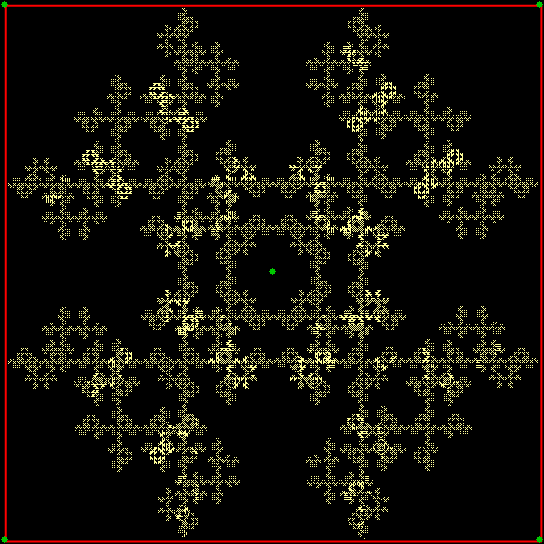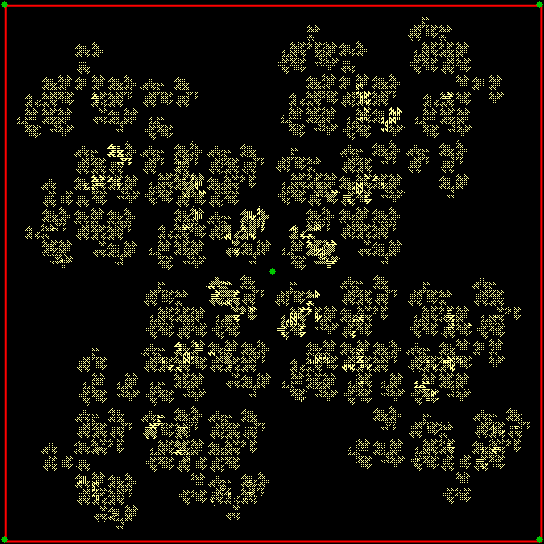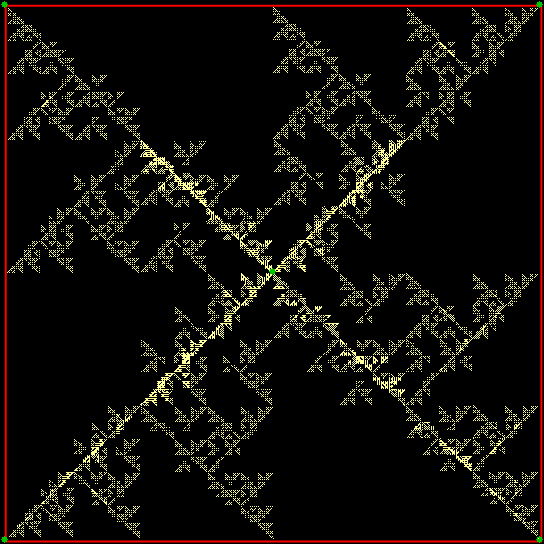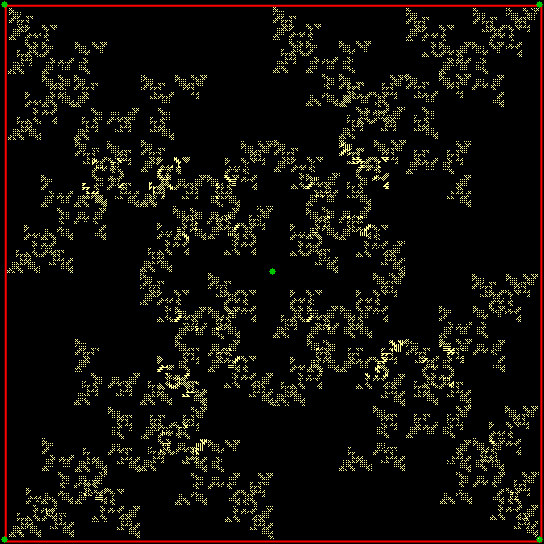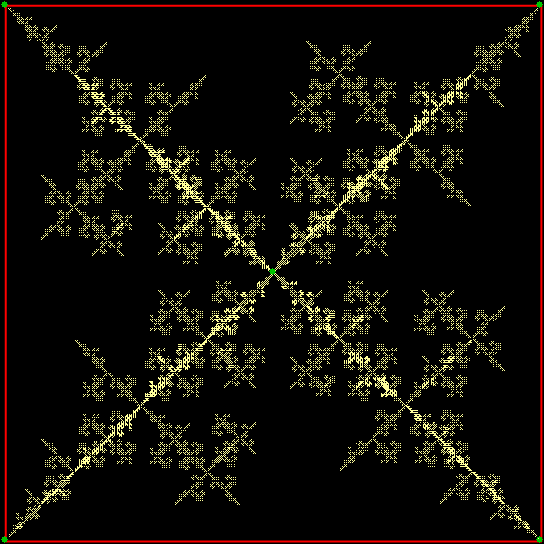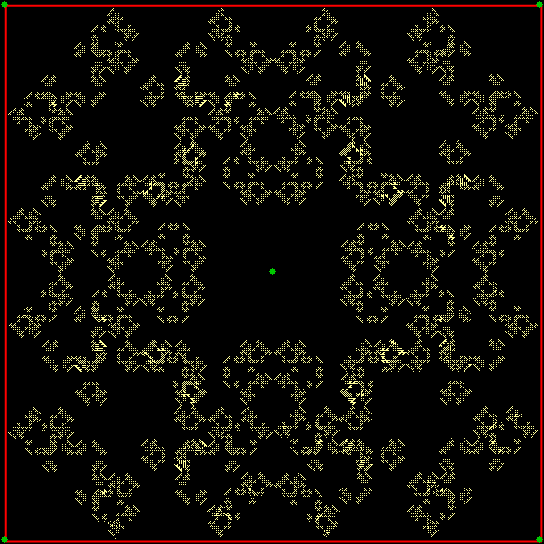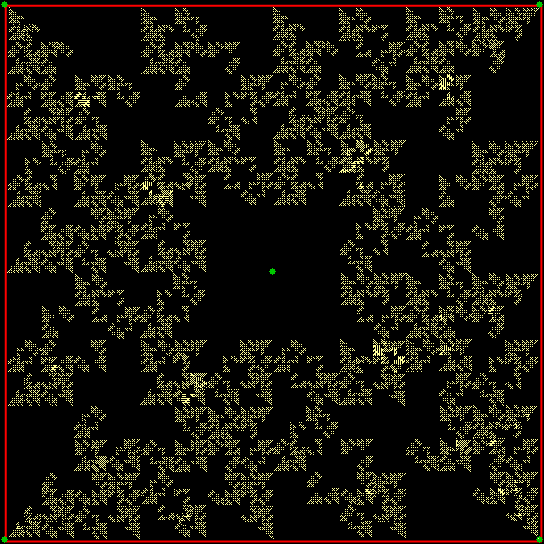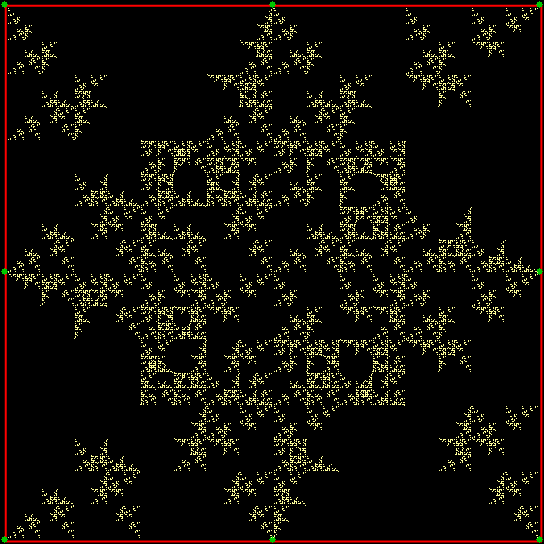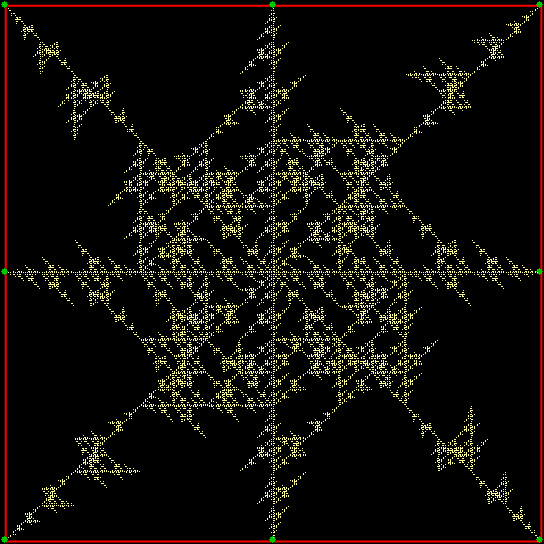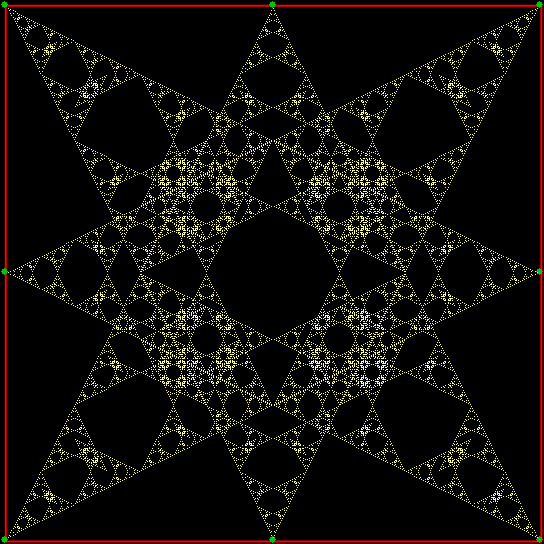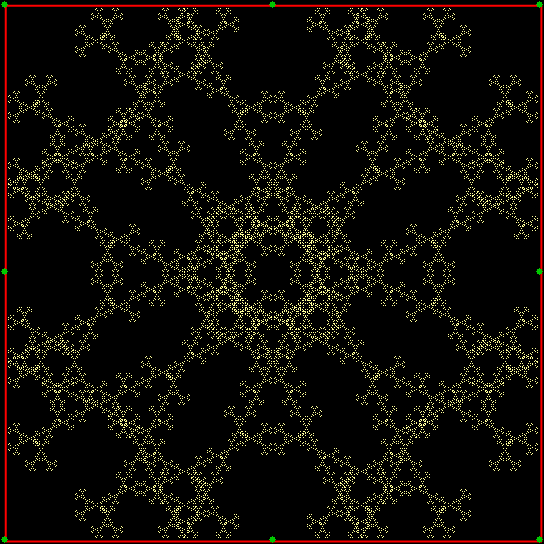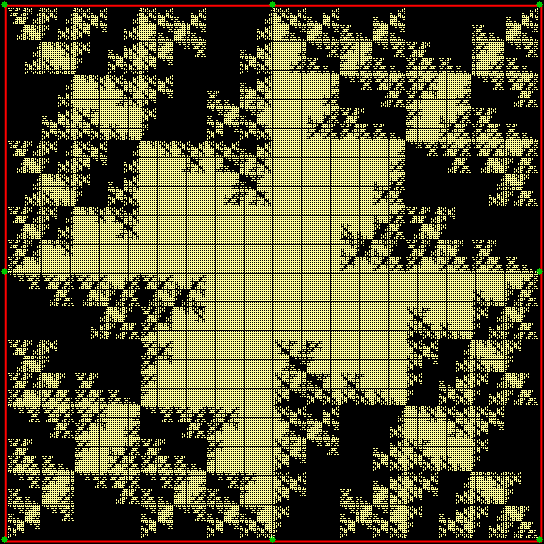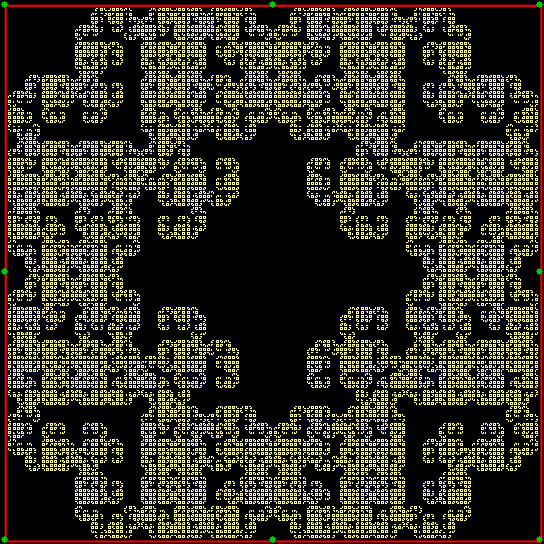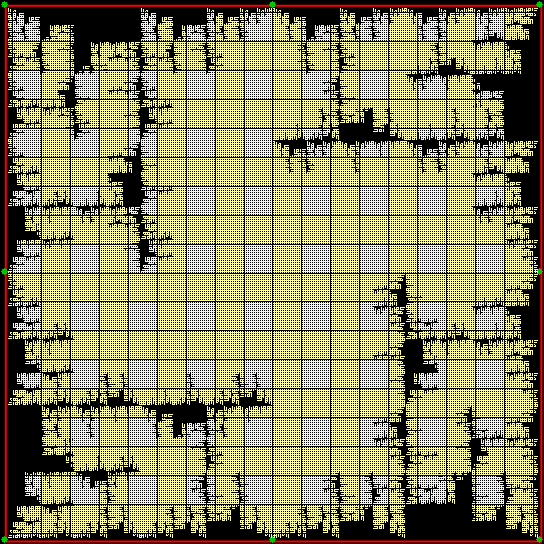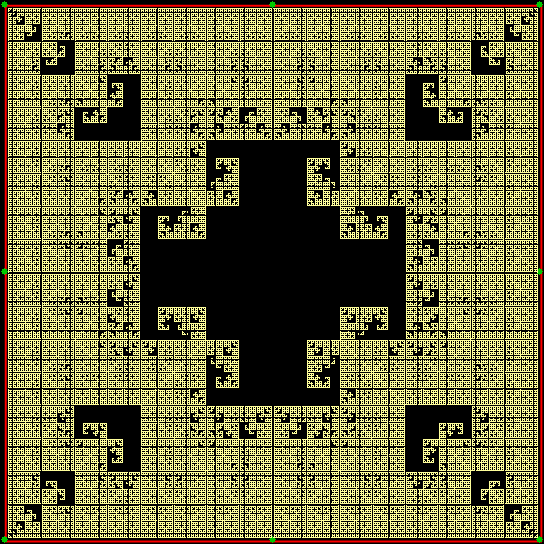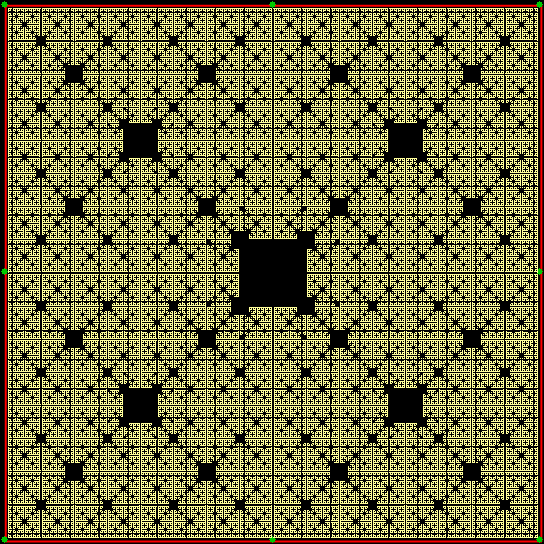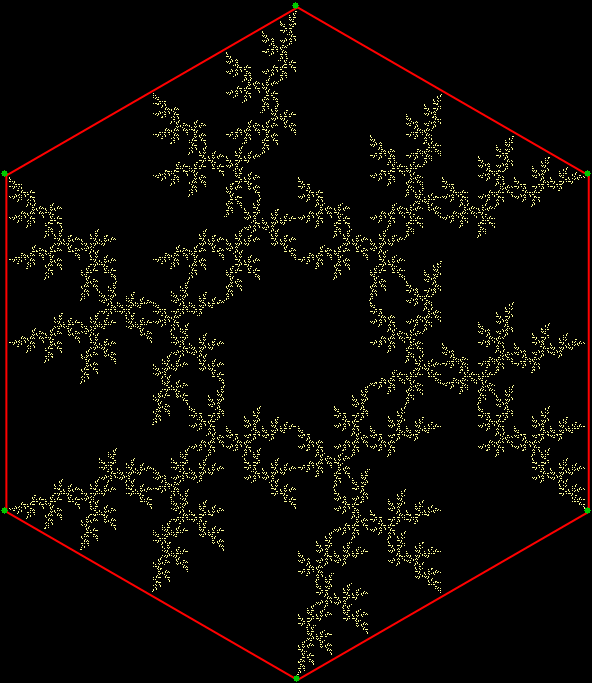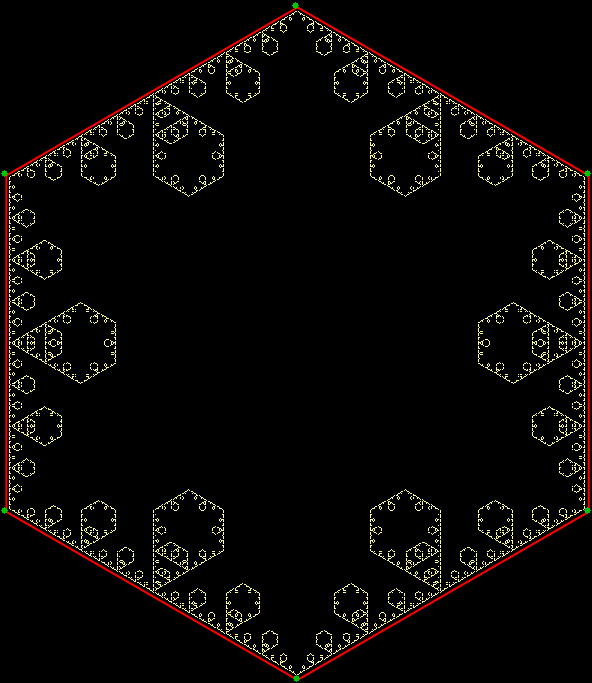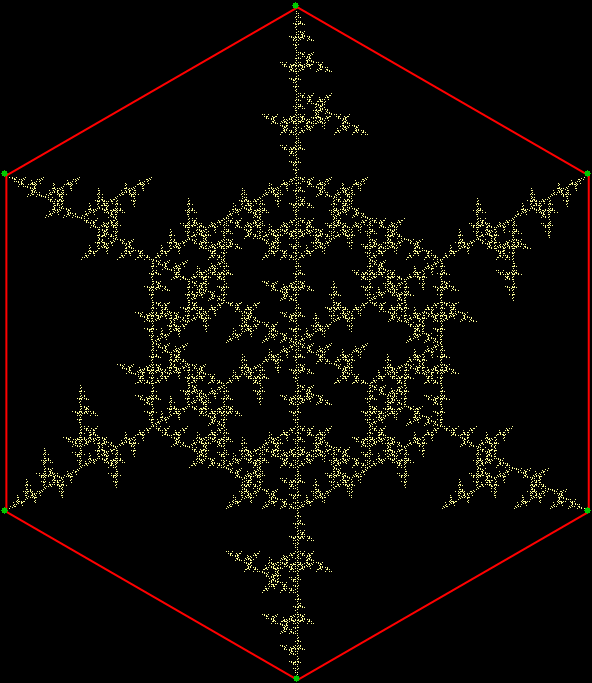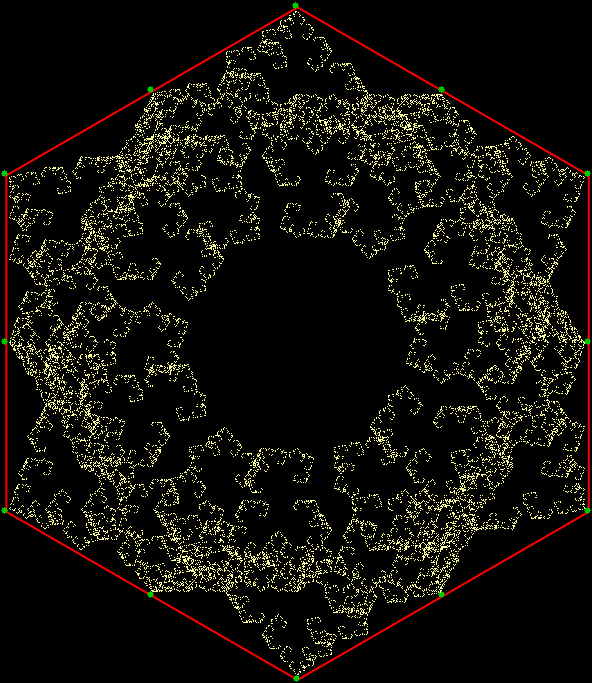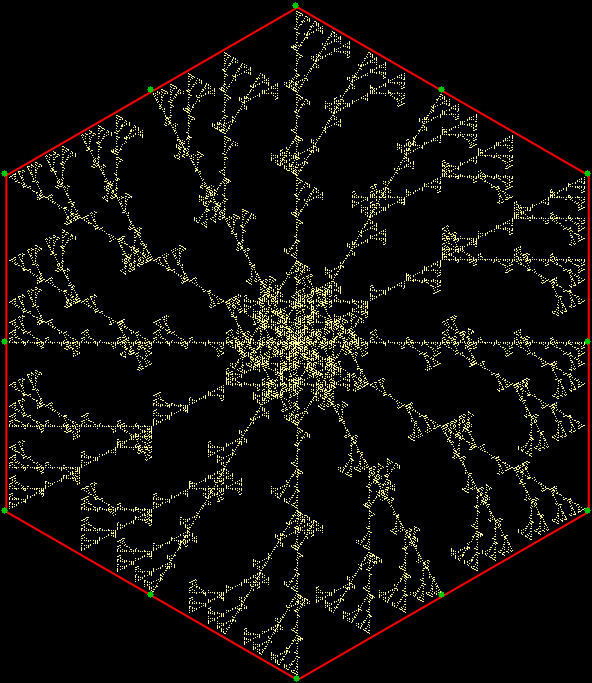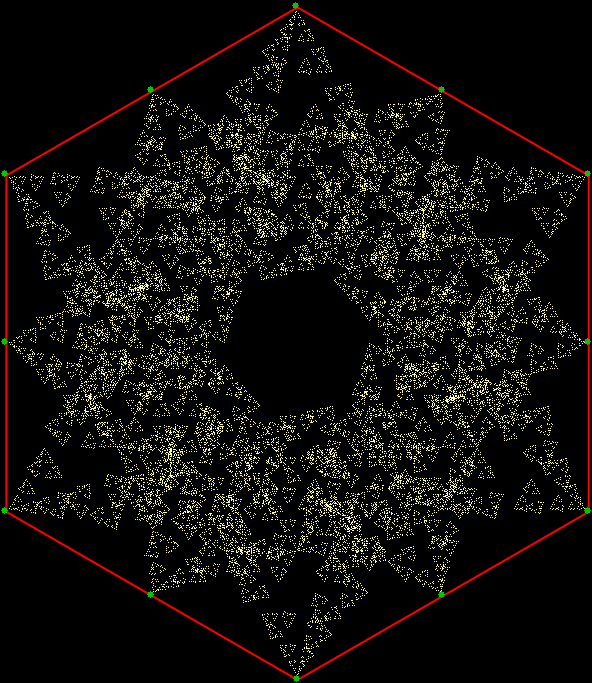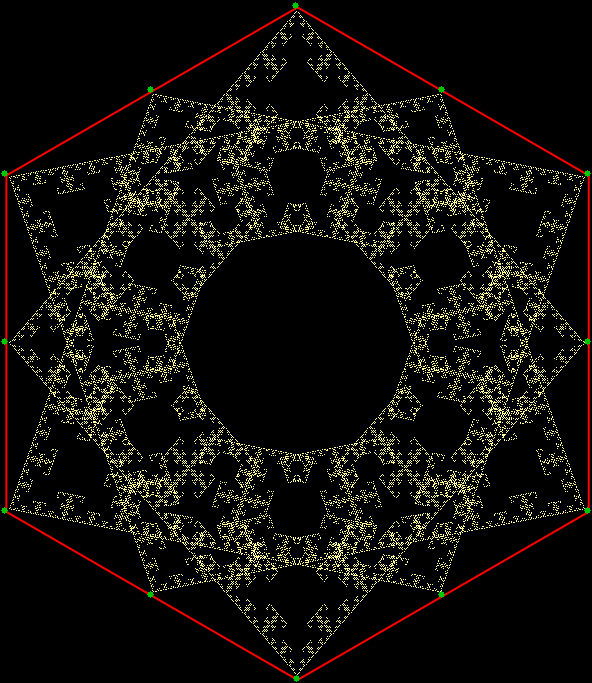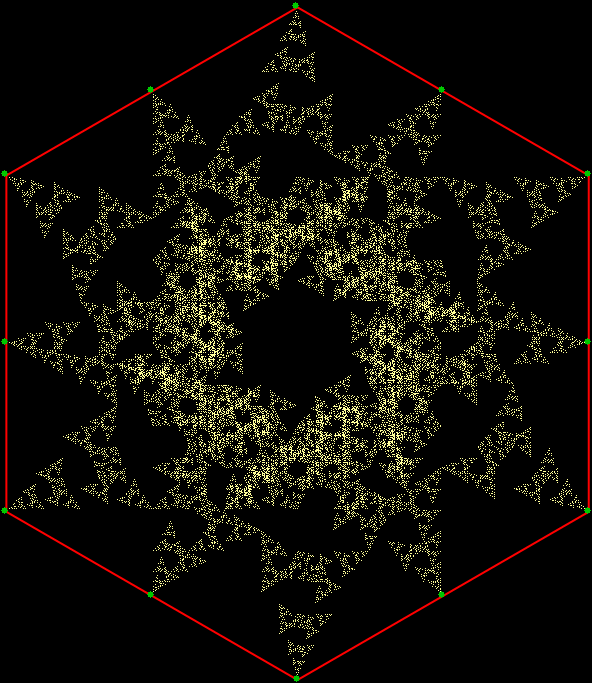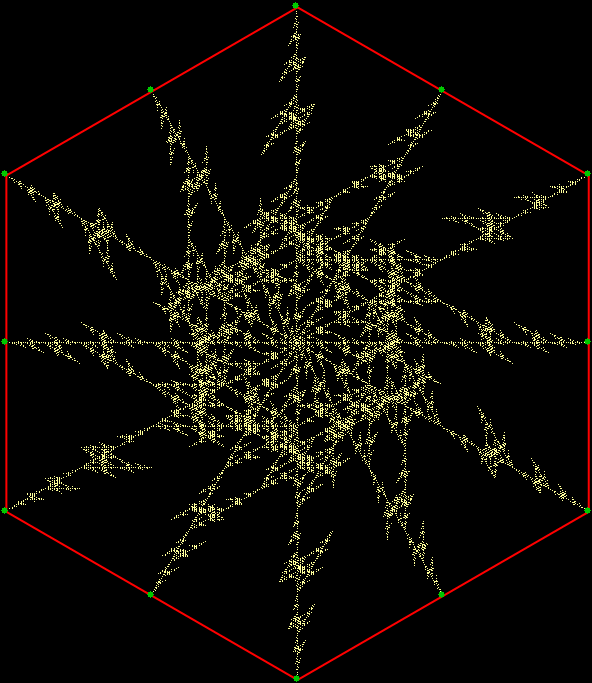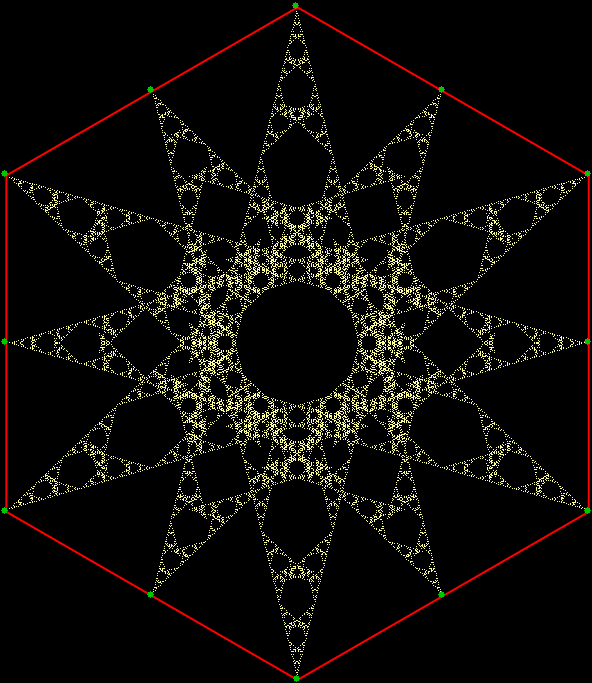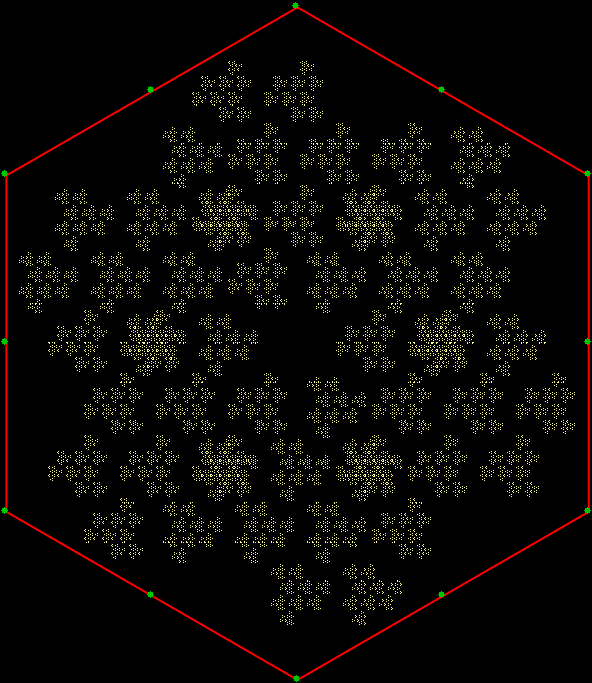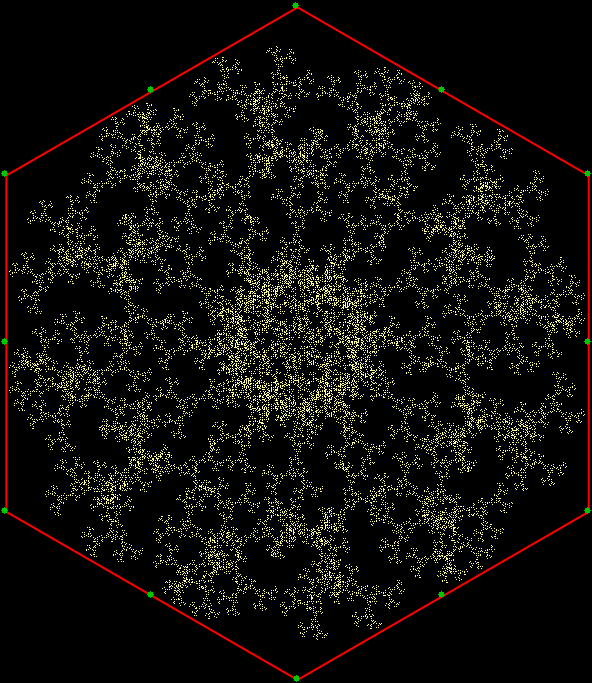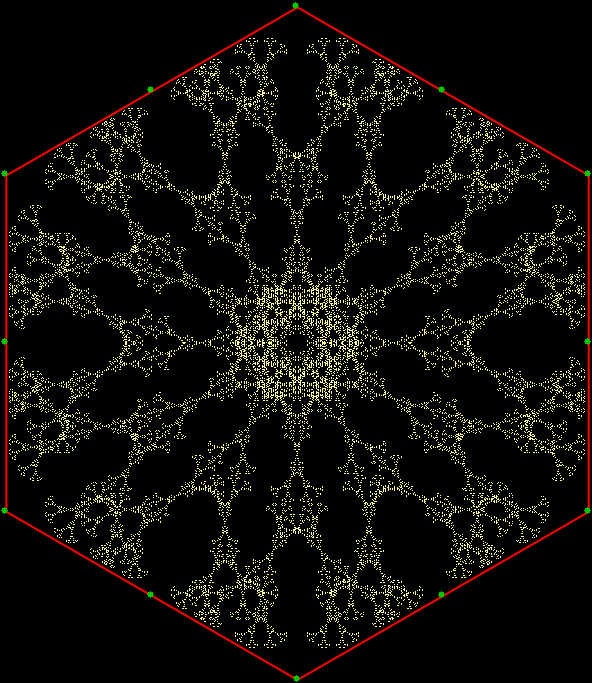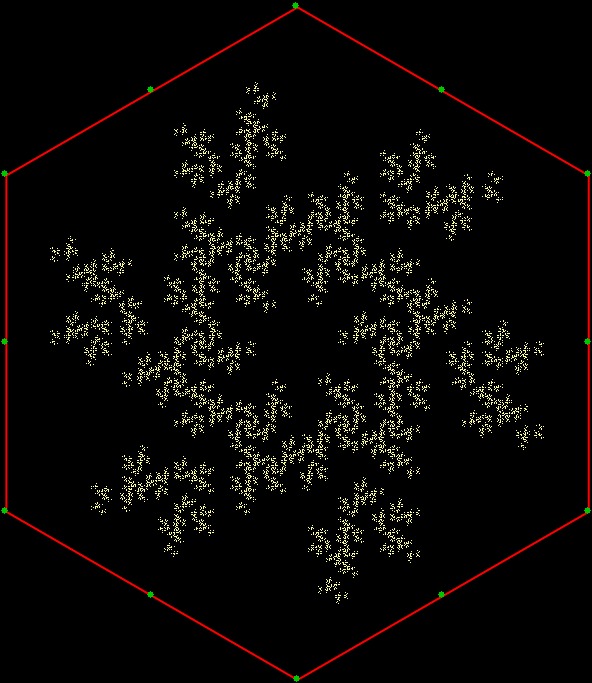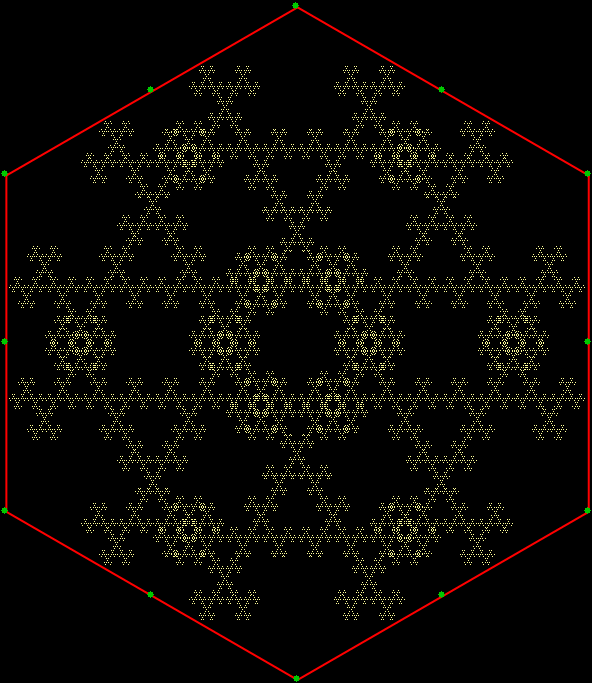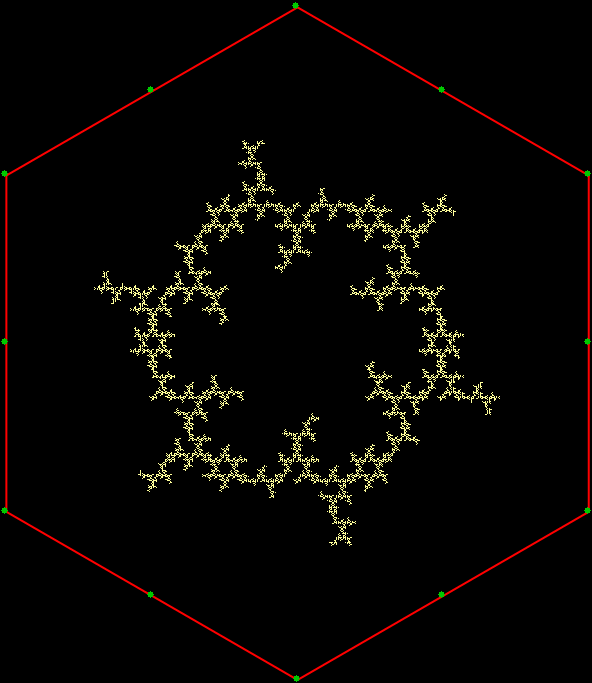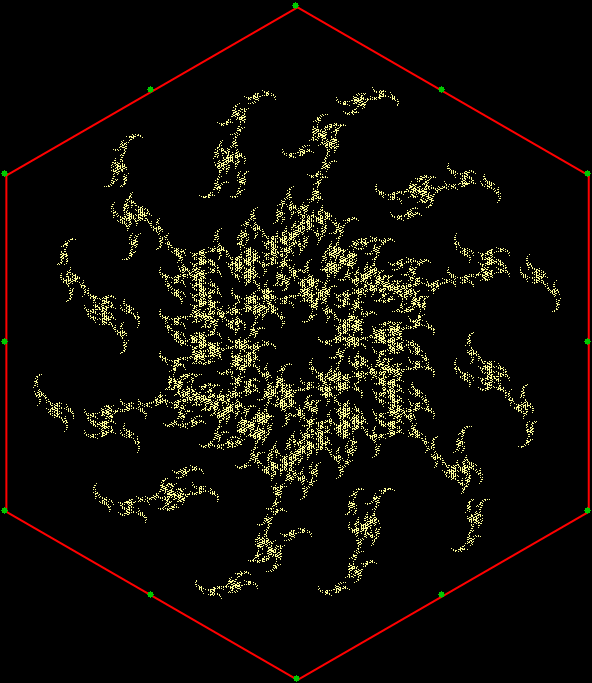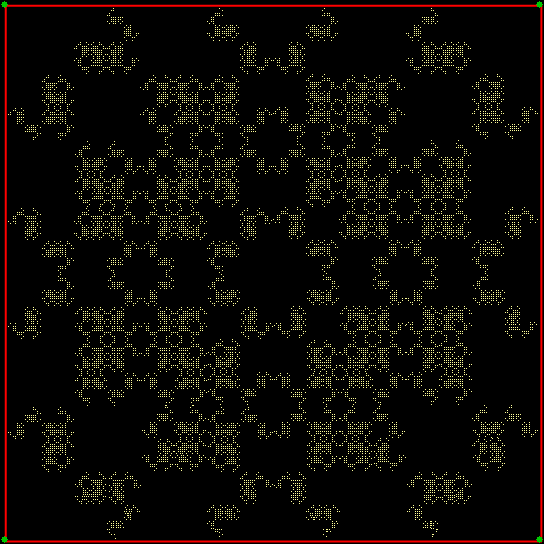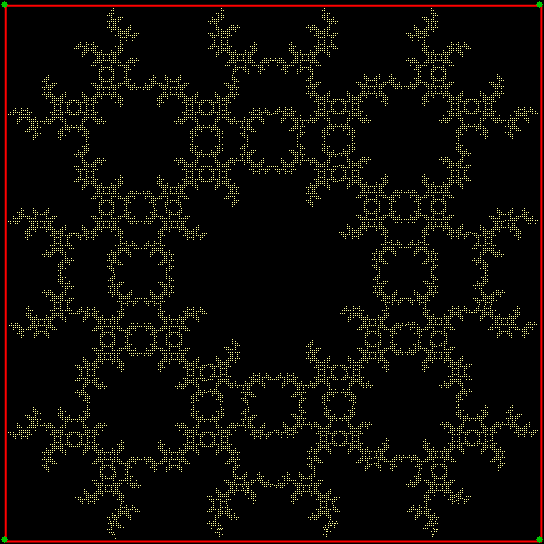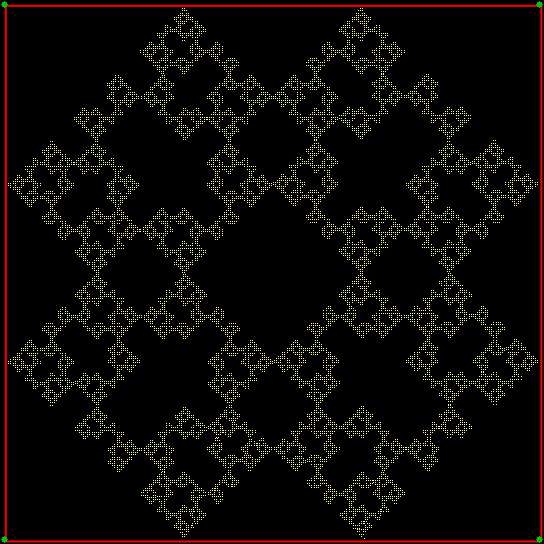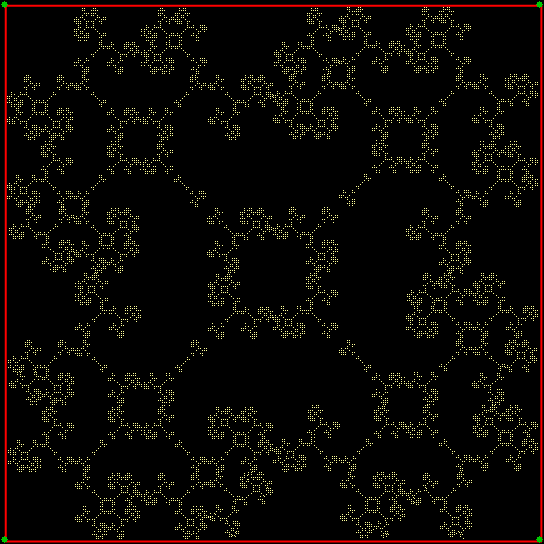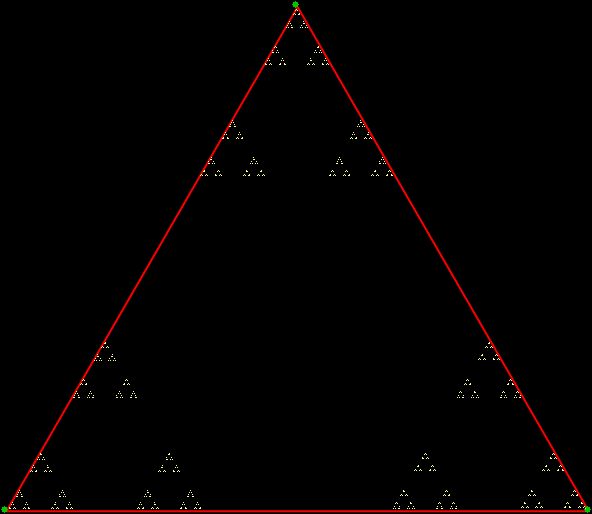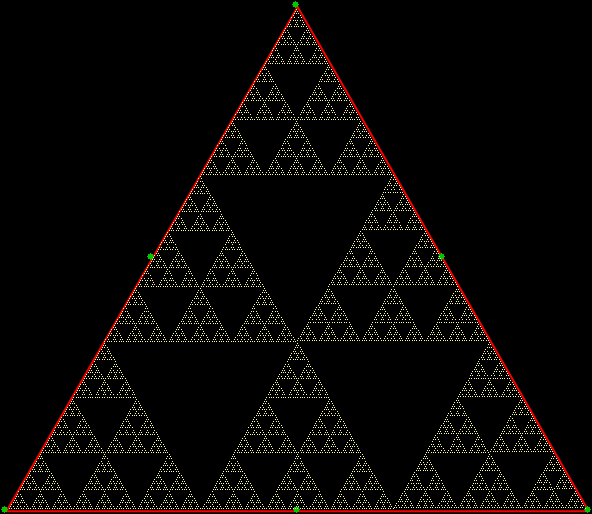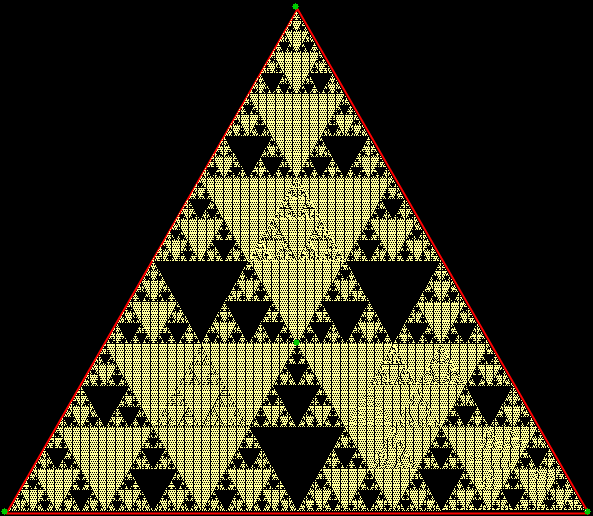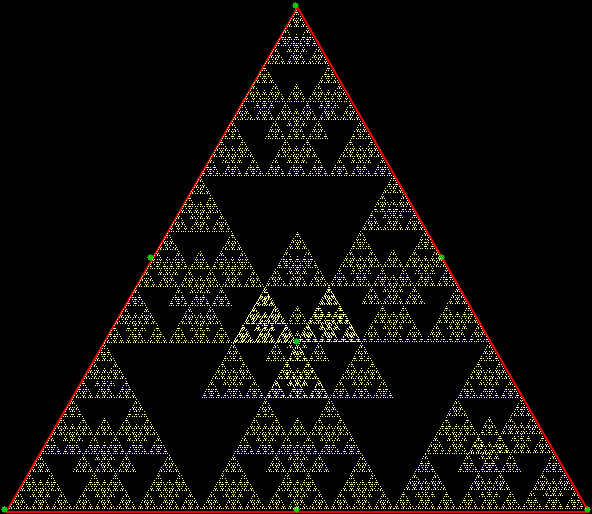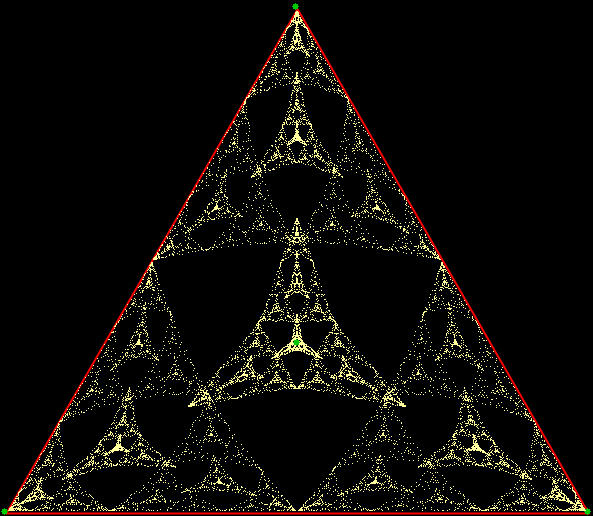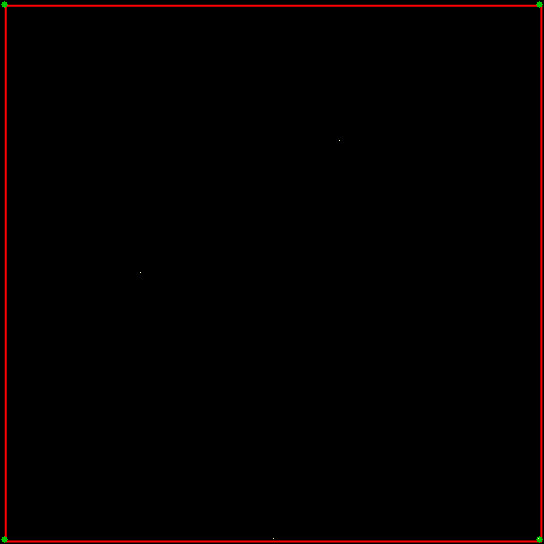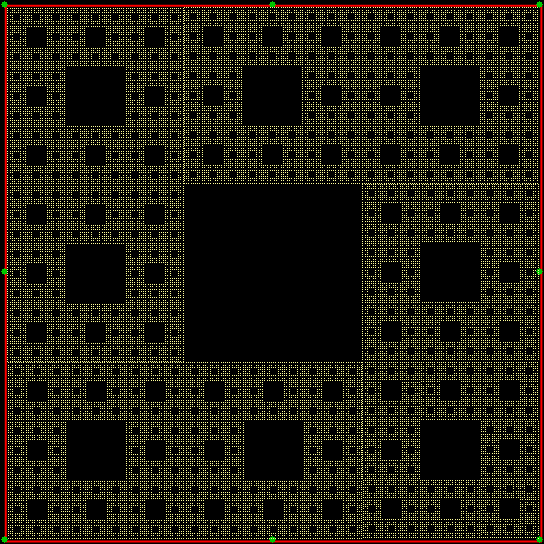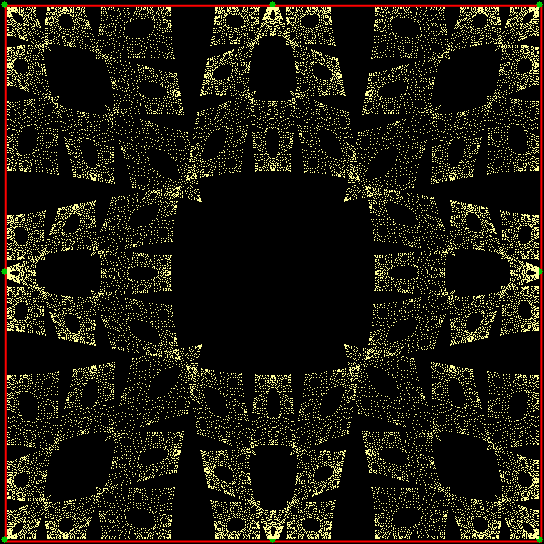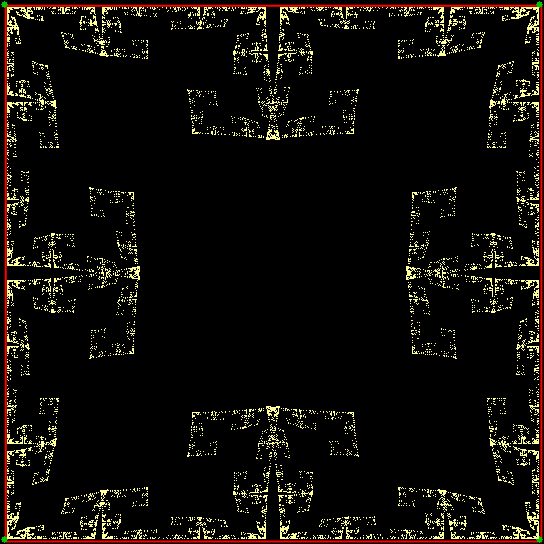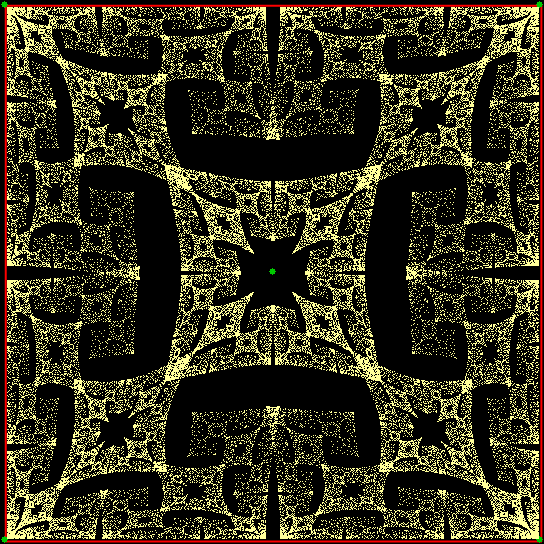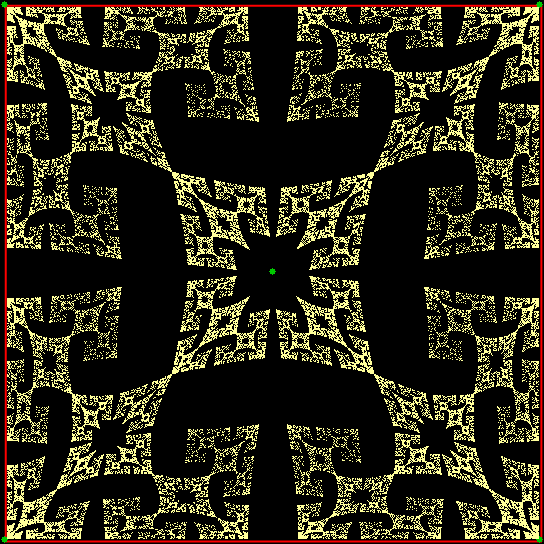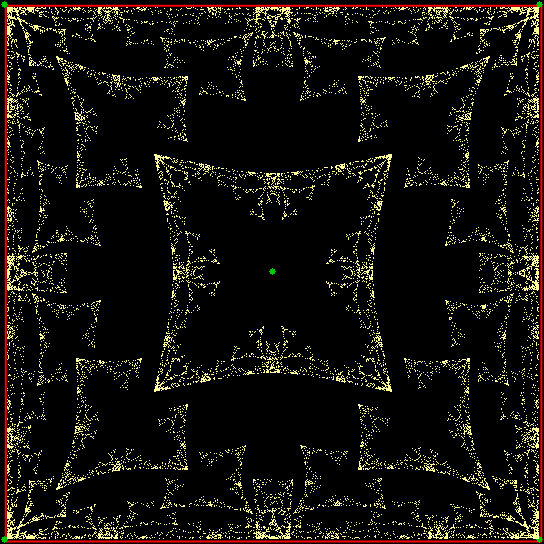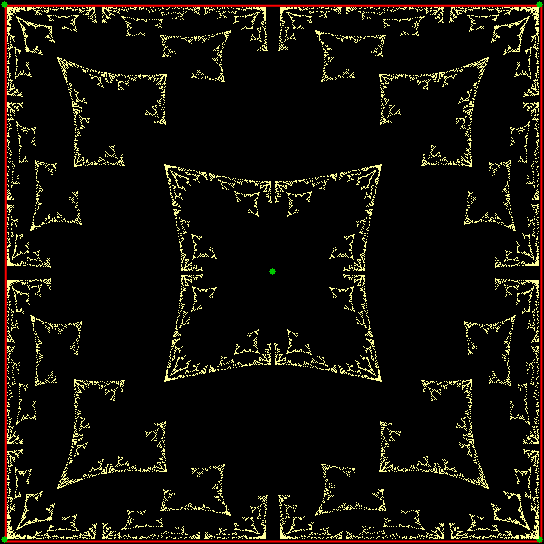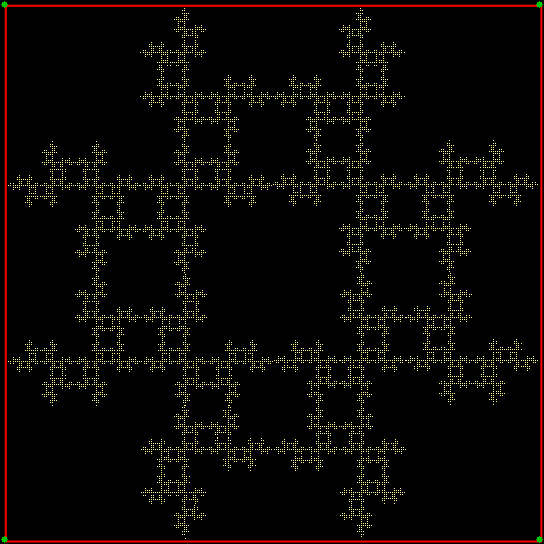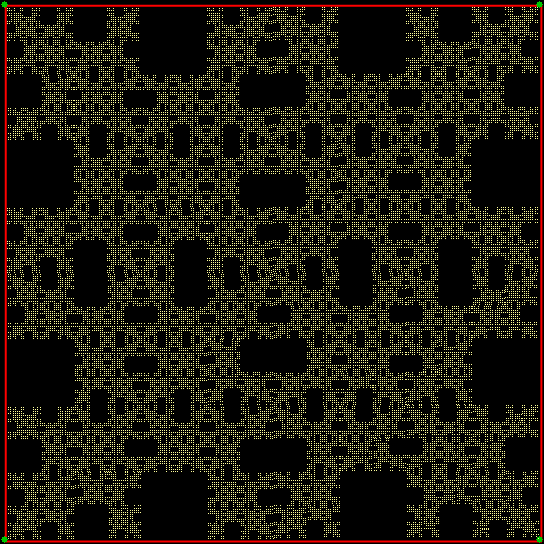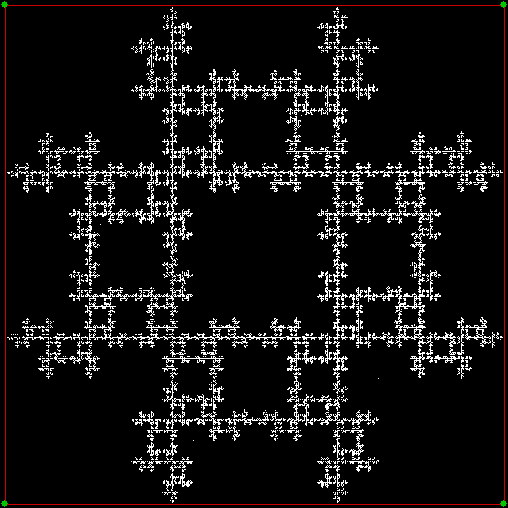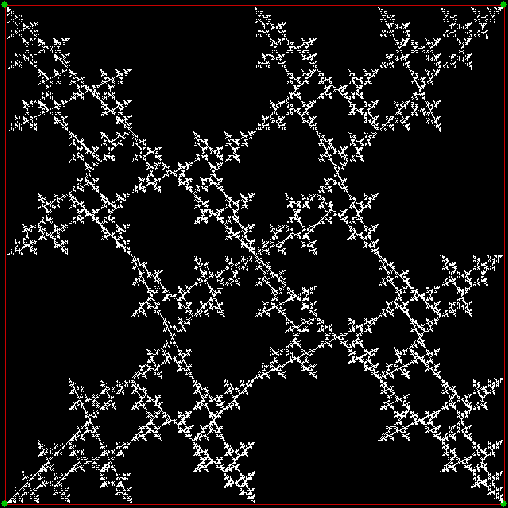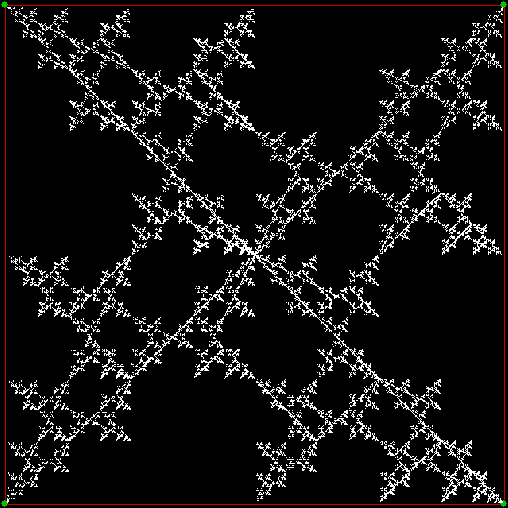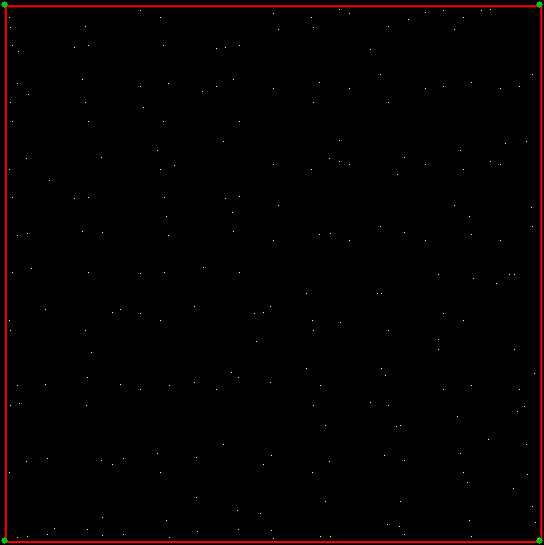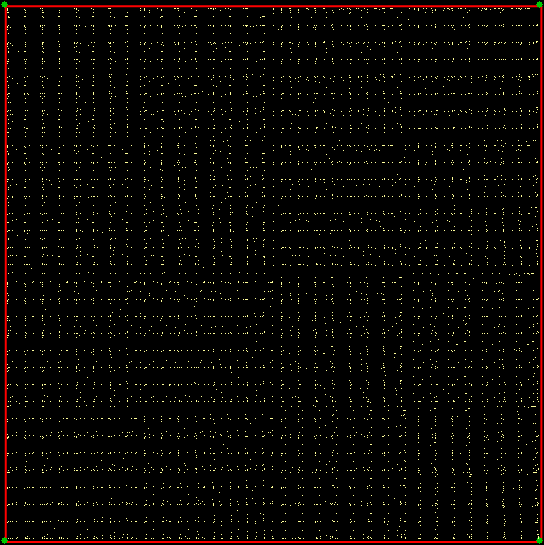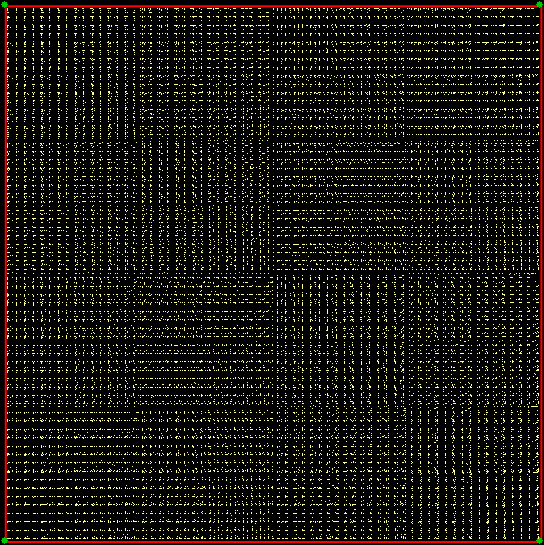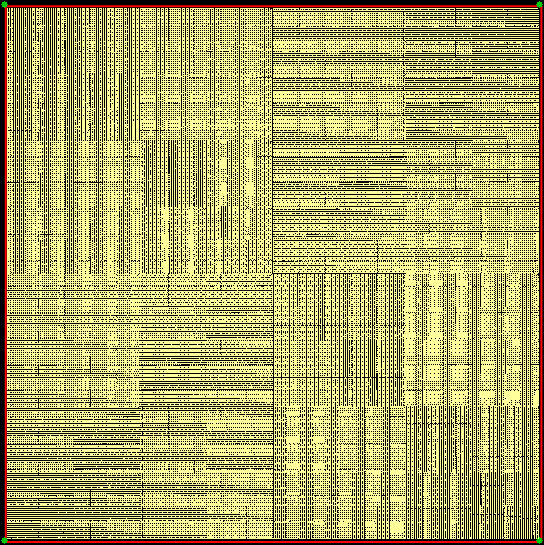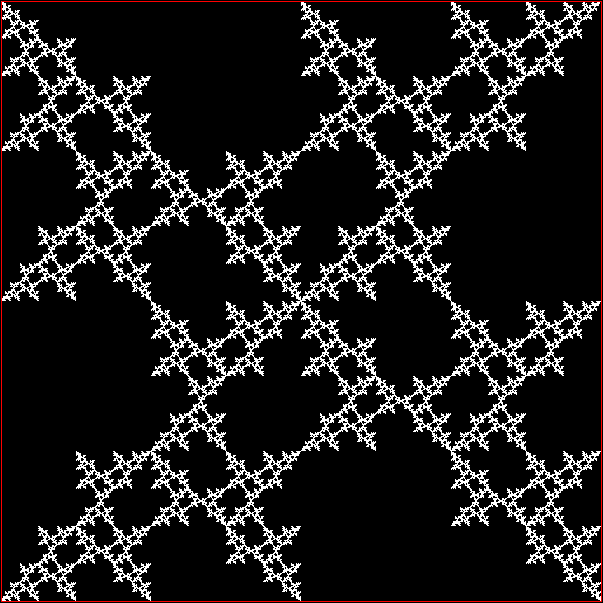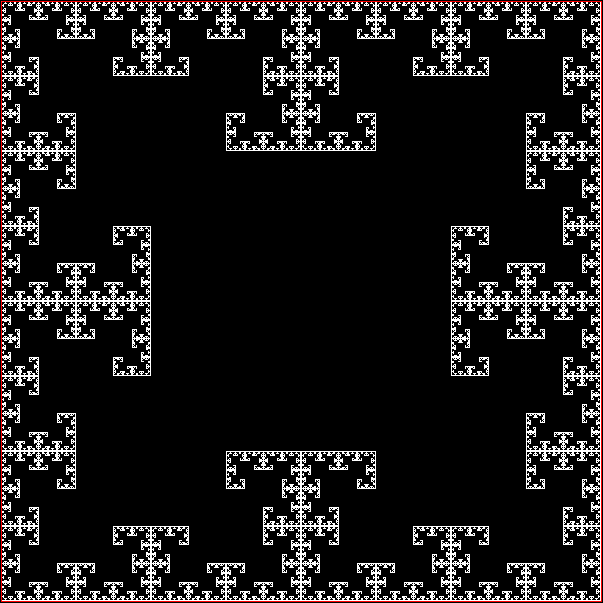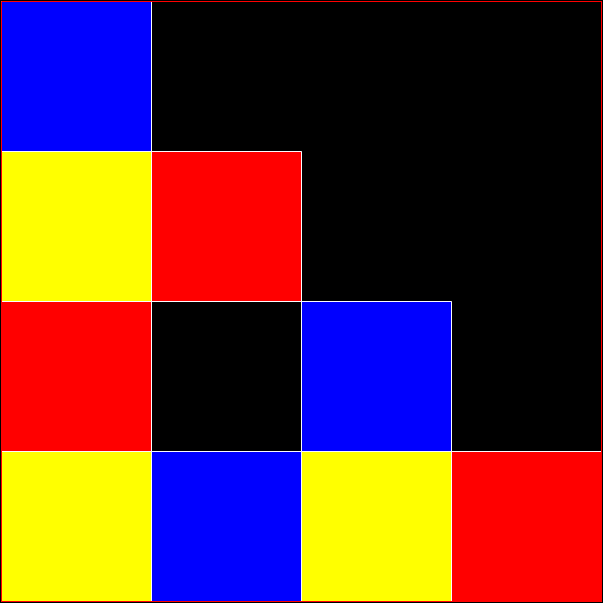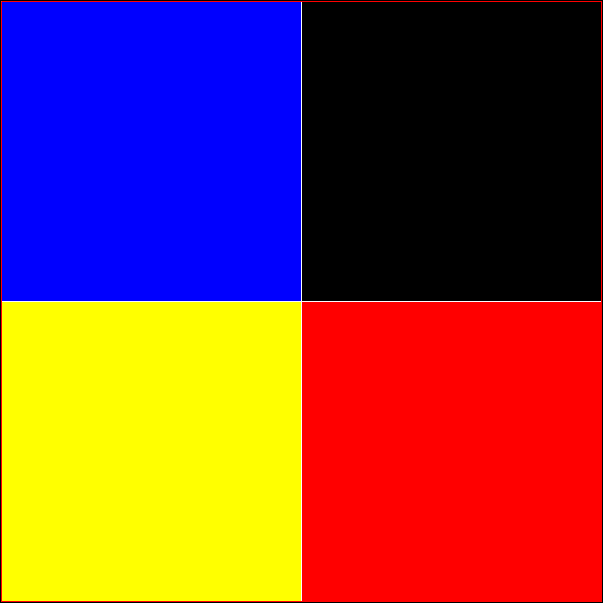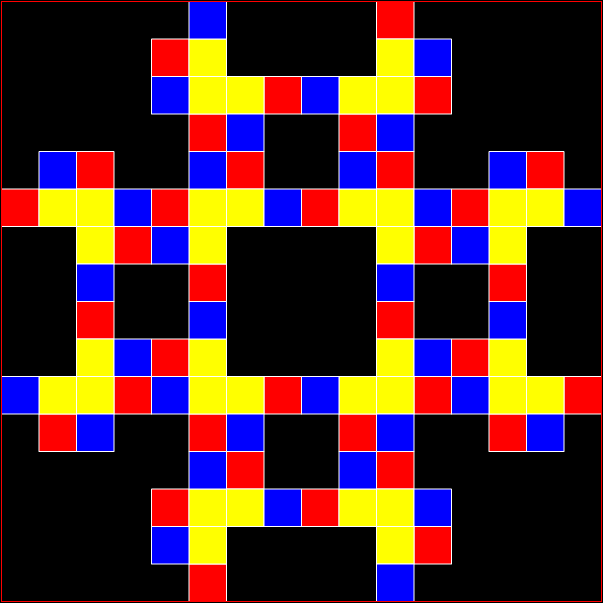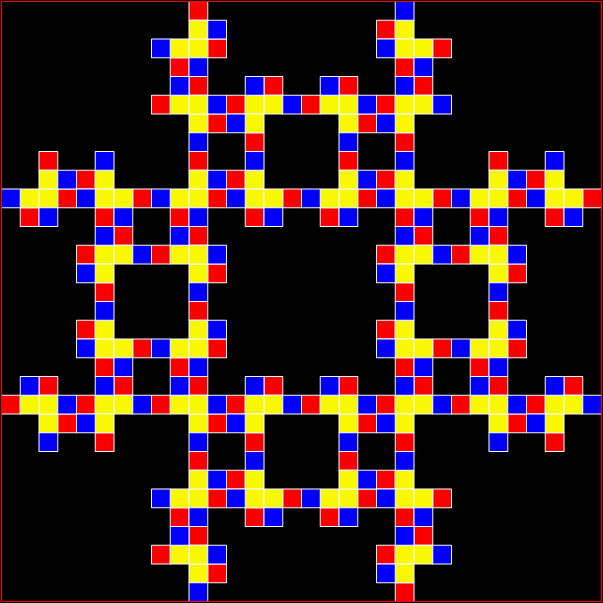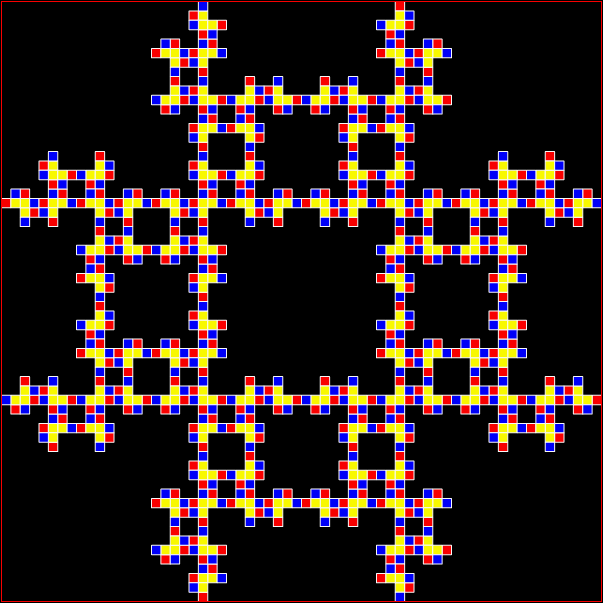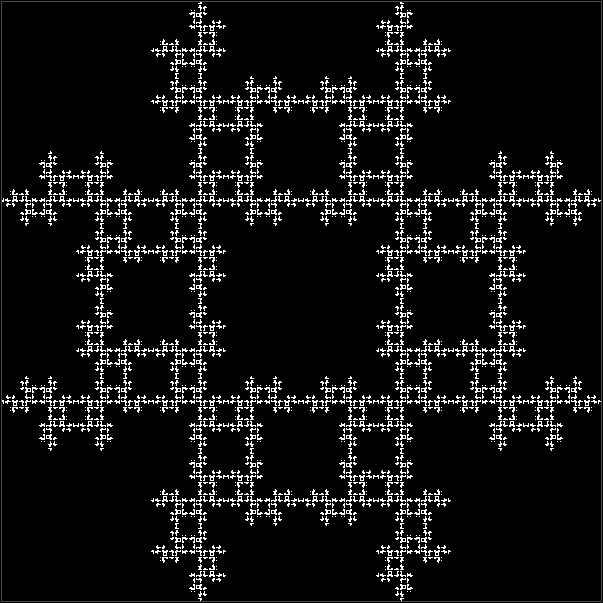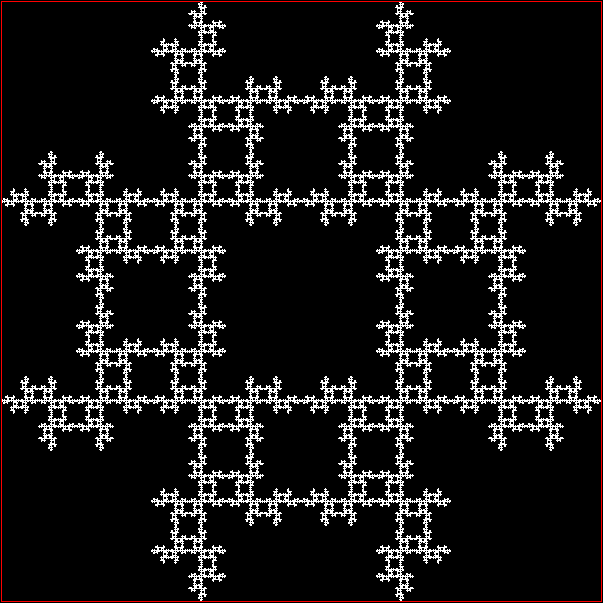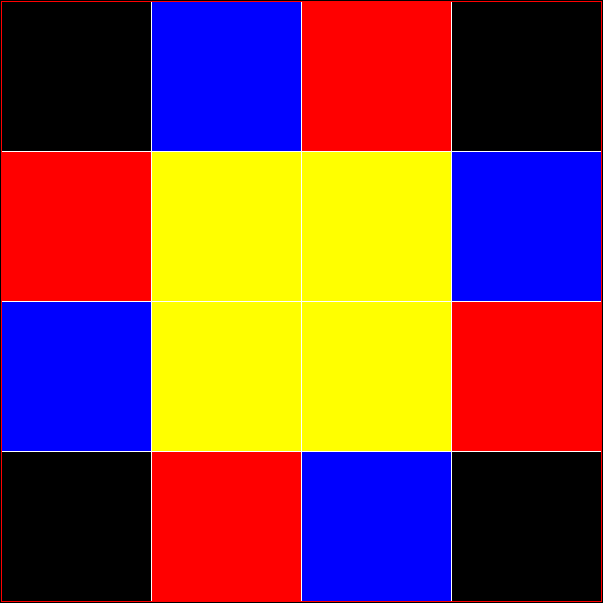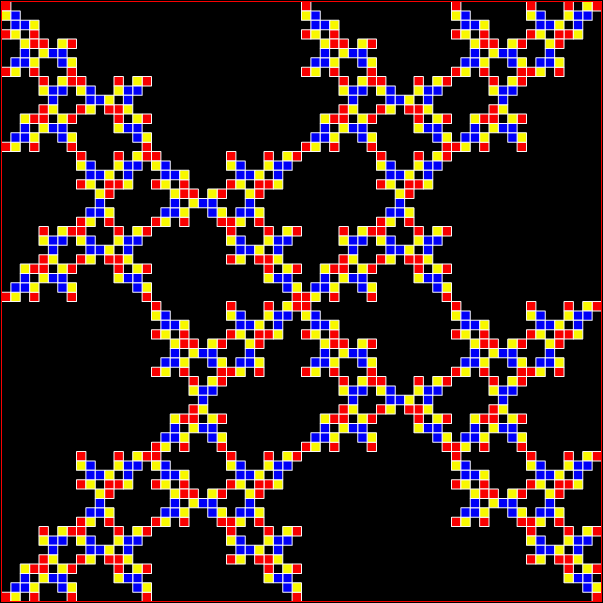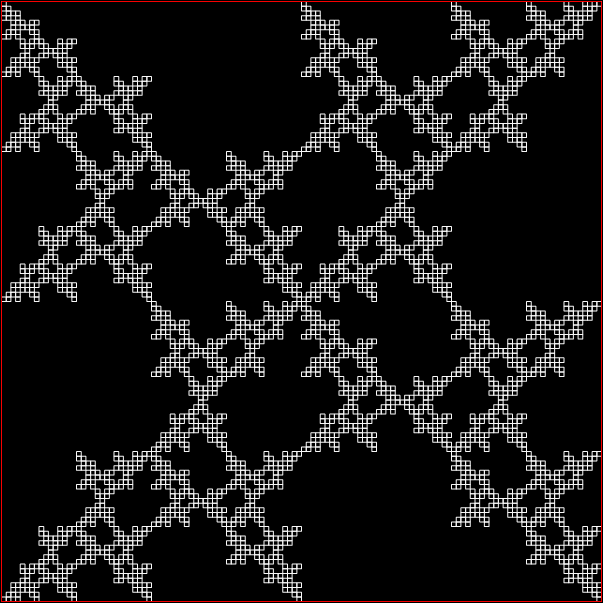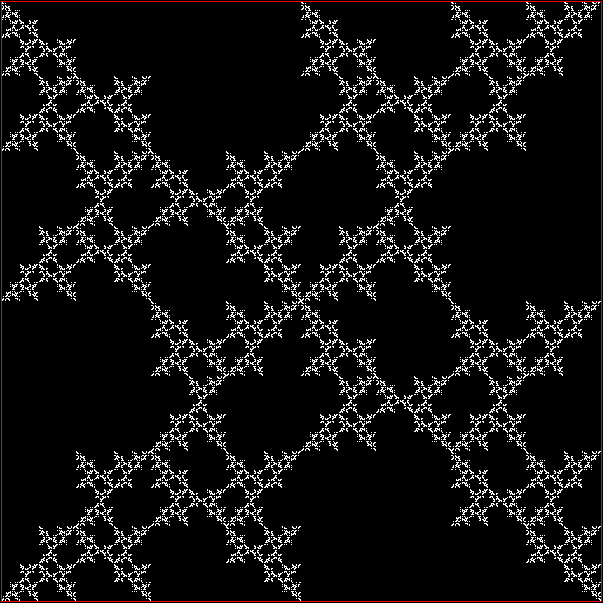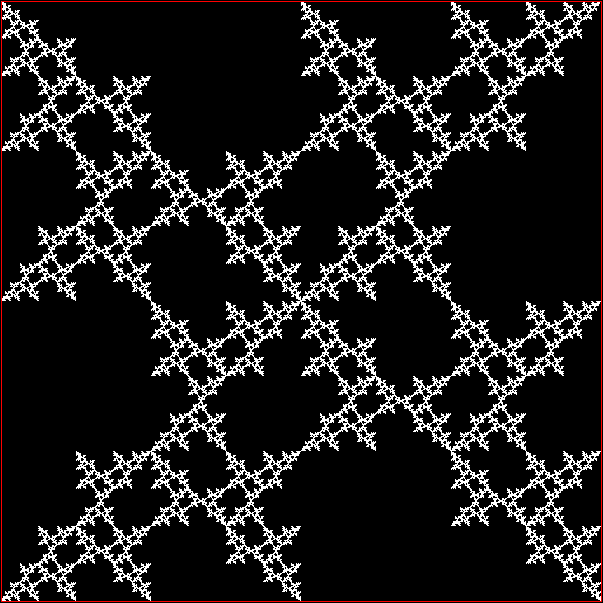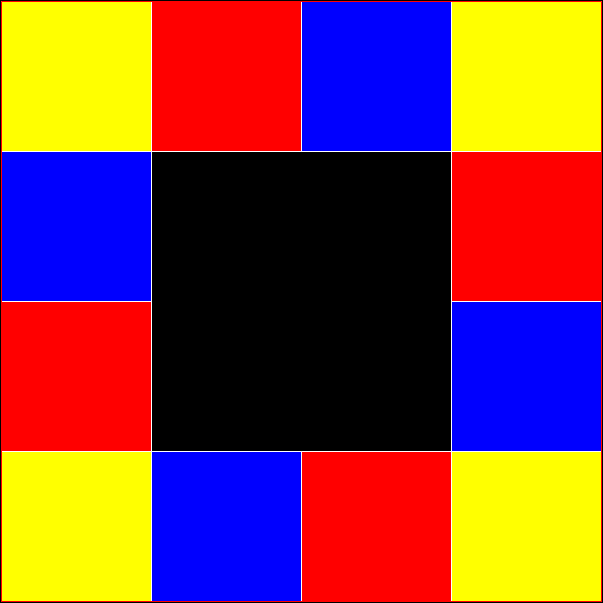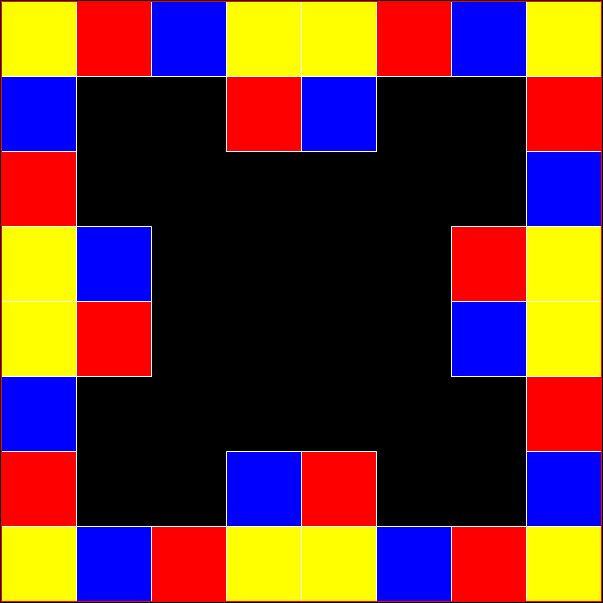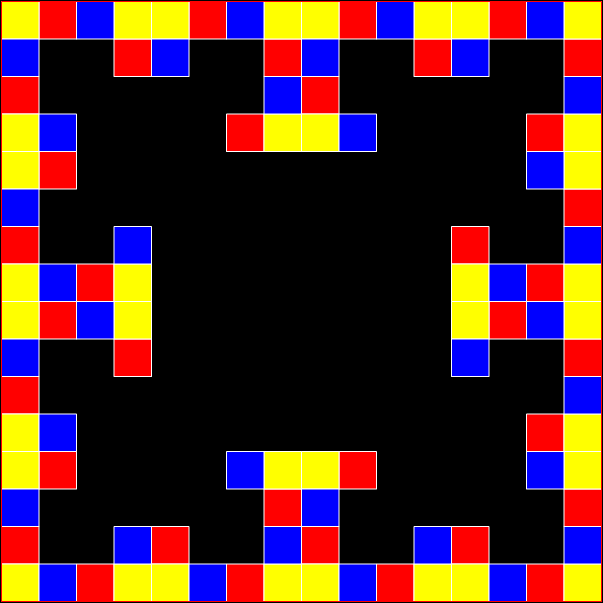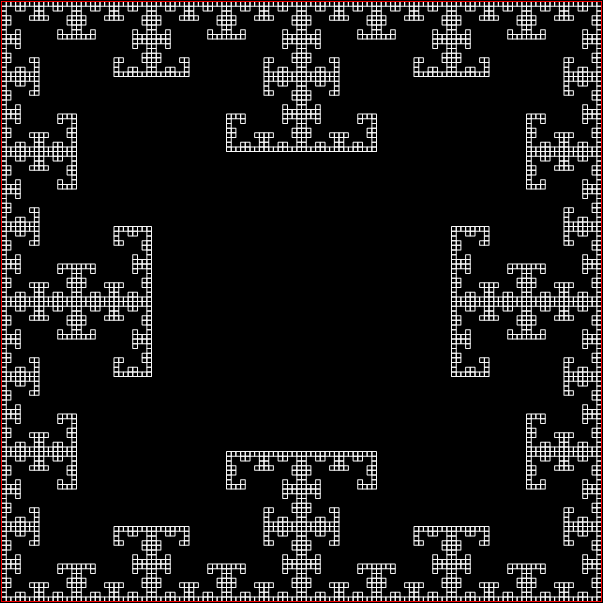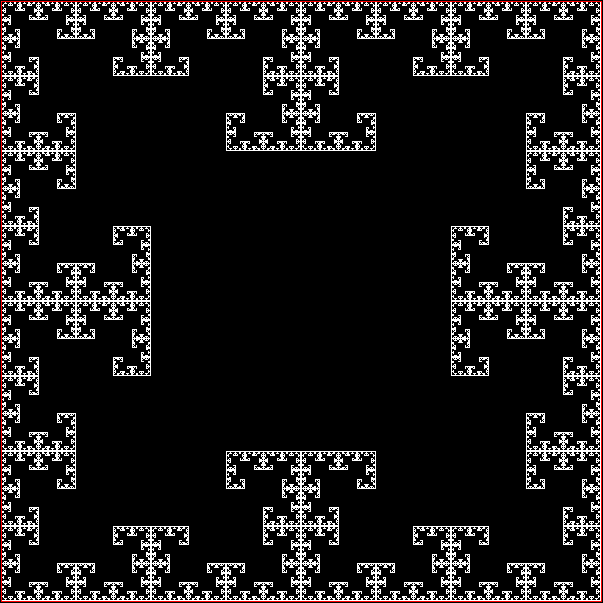In “Scaffscapes”, I looked at these three fractals and described how they were in a sense the same fractal, even though they looked very different:
Fractal #1
Fractal #2
Fractal #3
But even if they are all the same in some mathematical sense, their different appearances matter in an aesthetic sense. Fractal #1 is unattractive and seems uninteresting:
Fractal #1, unattractive, uninteresting and unnamed
Fractal #3 is attractive and interesting. That’s part of why mathematicians have given it a name, the T-square fractal:
Fractal #3 — the T-square fractal
But fractal #2, although it’s attractive and interesting, doesn’t have a name. It reminds me of a ninja throwing-star or shuriken, so I’ve decided to call it the throwing-star fractal or ninja-star fractal:
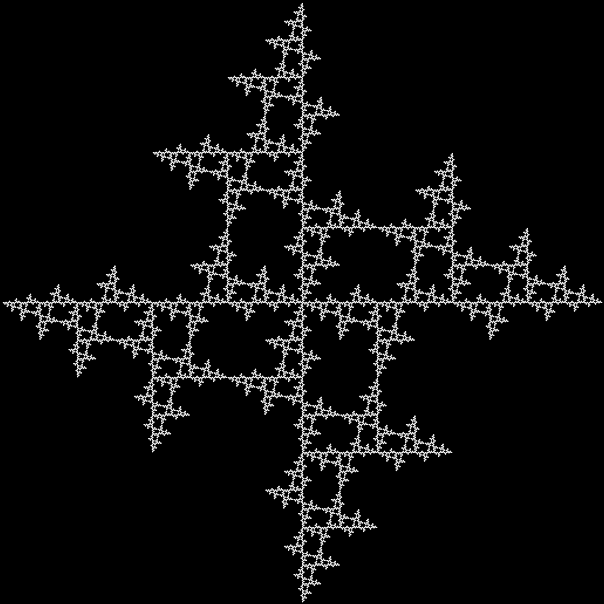
Fractal #2, the throwing-star fractal
A ninja throwing-star or shuriken
This is one way to construct a throwing-star fractal:
Throwing-star fractal, stage 1
Throwing-star fractal, #2
Throwing-star fractal, #3
Throwing-star fractal, #4
Throwing-star fractal, #5
Throwing-star fractal, #6
Throwing-star fractal, #7
Throwing-star fractal, #8
Throwing-star fractal, #9
Throwing-star fractal, #10
Throwing-star fractal, #11
Throwing-star fractal (animated)
But there’s another way to construct a throwing-star fractal. You use what’s called the chaos game. To understand the commonest form of the chaos game, imagine a ninja inside an equilateral triangle throwing a shuriken again and again halfway towards a randomly chosen vertex of the triangle. If you mark each point where the shuriken lands, you eventually get a fractal called the Sierpiński triangle:
Chaos game with triangle stage 1
Chaos triangle #2
Chaos triangle #3
Chaos triangle #4
Chaos triangle #5
Chaos triangle #6
Chaos triangle #7
Chaos triangle (animated)
When you try the chaos game with a square, with the ninja throwing the shuriken again and again halfway towards a randomly chosen vertex, you don’t get a fractal. The interior of the square just fills more or less evenly with points:
Chaos game with square, stage 1
Chaos square #2
Chaos square #3
Chaos square #4
Chaos square #5
Chaos square #6
Chaos square (anim)
But suppose you restrict the ninja’s throws in some way. If he can’t throw twice or more in a row towards the same vertex, you get a familiar fractal:
Chaos game with square, ban on throwing towards same vertex, stage 1
Chaos square, ban = v+0, #2
Chaos square, ban = v+0, #3
Chaos square, ban = v+0, #4
Chaos square, ban = v+0, #5
Chaos square, ban = v+0, #6
Chaos square, ban = v+0 (anim)
But what if the ninja can’t throw the shuriken towards the vertex one place anti-clockwise of the vertex he’s just thrown it towards? Then you get another familiar fractal — the throwing-star fractal:
Chaos square, ban = v+1, stage 1
Chaos square, ban = v+1, #2
Chaos square, ban = v+1, #3
Chaos square, ban = v+1, #4
Chaos square, ban = v+1, #5
Game of Throwns — throwing-star fractal from chaos game (static)
Game of Throwns — throwing-star fractal from chaos game (anim)
And what if the ninja can’t throw towards the vertex two places anti-clockwise (or two places clockwise) of the vertex he’s just thrown the shuriken towards? Then you get a third familiar fractal — the T-square fractal:
Chaos square, ban = v+2, stage 1
Chaos square, ban = v+2, #2
Chaos square, ban = v+2, #3
Chaos square, ban = v+2, #4
Chaos square, ban = v+2, #5
T-square fractal from chaos game (static)
T-square fractal from chaos game (anim)
Finally, what if the ninja can’t throw towards the vertex three places anti-clockwise, or one place clockwise, of the vertex he’s just thrown the shuriken towards? If you can guess what happens, your mathematical intuition is much better than mine.
Post-Performative Post-Scriptum
I am not now and never have been a fan of George R.R. Martin. He may be a good author but I’ve always suspected otherwise, so I’ve never read any of his books or seen any of the TV adaptations.


